Equipment
WRX Insider: A deep dive into the bag of Cameron Champ
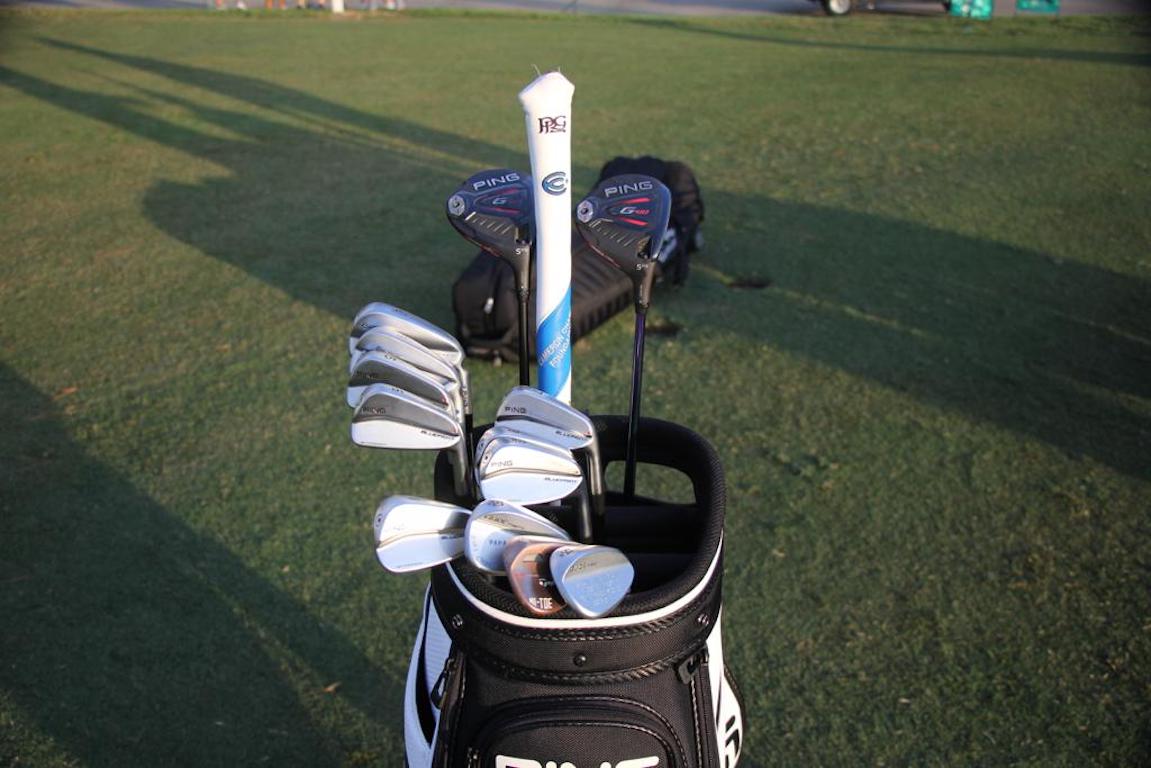
Long hitters on the PGA Tour come in all shapes and sizes, from the oversized behemoth that is now Bryson Dechambeau to the slighter-in-size Rory McIlroy, the traditional long-and-lean Dustin Johnson, and today’s subject, a player who lives (in size) right between Rory and DJ: Cameron Champ.
Of the four players mentioned, the two who live in the prestigious 185+ zip code are Bryson and Cam Champ. Similar speed but on totally different planets with respect to 1) how they get there and 2) the set makeup to complement it.
If you go back to the look into Bryson’s bag, you see a setup that is manipulated to control spin and launch at any cost, even going as far as being one to two clubs strong from a loft perspective. Also, keep in mind that he has the odd factor of having all of his irons at 37.5 inches, so the math is very Bryson worthy.
In the case of Cameron Champ, it’s a totally different animal altogether. What we will find is a player who is looking for launch and spin, plays with modern/traditional lofts, and from a look above, you are looking at a pure speed profile. He’s strong, yes, but between Cameron and Bryson, it’s the difference between Bruce Lee and Hulk Hogan.
Ping tour tech Kenton “K.O” Oates assisted in this deep dive. This is what he had to say on Cam’s bag.
JW: Let’s start with spin and launch. How much of a challenge is it to find Cam a set up that allows control but at the same time doesn’t limit him speed-wise?
KO: Cameron has effortless power. He routinely tests around 190 mph of ball speed and he has much more in the tank if needed. We got to his current setup under the premise that control would equal distance at his speeds. If we could create more center contact and provide optimum spin (2600-3000), then Cameron was going to find more fairways and hit straighter shots, thus resulting in all the distance he would need. Cameron’s ball speed started to challenge our models for launch and spin the more we worked with him. In general, as launch goes down, spin must increase to keep the ball in the air to maximize distance. With Cam, he can launch it lower with less spin than most because his ball speed is so high. The ball stays in the air because it’s going so fast!
JW: If you look at Bryson’s set up versus Cameron’s, as a fitter, what can you tell us about how each player gets to his particular optimization?
KO: I think the biggest difference between Bryson and Cameron are the launch conditions they are trying to create. Bryson is hitting his ball to the stratosphere compared to Cameron. Bryson is a smart guy and he understands that the higher he hits it the more distance he can get. Although Cameron can hit up on it and create numbers that look better on Trackman, he has always been more comfortable hitting a lower launching bullet. My guess is Bryson is hitting up on his driver currently and using much less loft than the almost 10 degrees of actual loft Cameron is playing while swinging down 1-2 degrees.
Bryson studies the science, and the science says to maximize distance, you need to create higher launch with low spin. He accomplishes this with his AOA. No doubt Bryson’s AoA is on the up. This allows him to reduce the loft of his driver which creates faster ball speeds and less spin. The cool thing is that Cam does it the exact opposite. Cam’s AoA is down 1 or 2 degrees. When Cam came to us as a junior, he was down like 6-8! He could hardly spin it under 3,000. Foley has done a great job of getting him closer to neutral, thus increasing his distance by launching it higher with less spin. At one point while working with him, he had his AoA in the plus and he was hitting bombs. He increased his distance but, his accuracy decreased. He has settled at 1-2 down to maximize both his distance and accuracy.
JW: Cam swapped out of G400 Max with Fujikura Tour Spec last season into a profile that lives at the other end of the spectrum. What was that process like?
KO: Cameron got into his current set up at Liberty National two years ago during the FedEx Cup. As stated above, Cameron was looking for consistency over distance during this process. His main goals were to eliminate left, increase center contact and control spin. The last item is sometimes confusing with Cameron. You would think controlling spin with someone at the speed would always be decreasing, but it was the opposite with Cameron. To add the consistency and reduce left we shorted and stiffened the tip of the shaft profile, both these caused his spin at this normal loft to be well under 2,300, which at Cameron’s lower launch, feels out of control. Once we adjusted the driver into the flat+ and got him roughly 10 degrees, of loft it was instantly a home run. Spin stabilized at 2,600 and the visual of seeing more loft really gave Cameron confidence to go ahead and cover his driver.
JW: When it comes to his irons, he switched out of iBlade into Blueprint. What caused the switch?
KO: The Blueprint was always a model that I think we thought Cameron would like. Initial testing Cameron loved the look, feel and capture, but with gamer shafts, he was not getting the right window, and since we were in the middle of the season Cameron went back to iBlades. During the initial testing, we learned a lot as we tried a softer shaft that allowed him to get the height he wanted but ended up being too loose feeling causing great dispersion. Second time we went to work we had a great—no pun intended—blueprint for what Cameron was looking for. Went from DG X100 to DG X700 to give Cameron some added control and also added out Cushin insert, which goes into the shaft and adds about 10 grams of total weight.
JW: Do you do anything special to the sole of his irons to complement his turf interaction?
KO: Blueprints go through the ground so good, we have not had to make any adjustments to Cameron’s or anyone else on tour playing that model.
JW: He (like a lot of players) has gone to a more lofted fairway metal to replace the 3-wood. Does a standard 3 wood just go too far and throws off his gapping?
KO: Spot on, traditional 3-woods were going so far, Cameron he just ended up never using them during competition. Last year at the 3M Open he came to us and had added up the number of 3-woods he hit for the year on courses, and I believe it was single digits. That’s when we started to work on his current fairway wood, which is basically 4-wood.
JW: Any fun Trackman stories?
KO: My favorite is still my first one at an event with Cameron. Cameron qualified for the U.S. Open as an amateur at Erin Hills, an event we decided to launch G400 metal woods. Cameron played a practice round with Rory earlier in which Justin Thomas was supposed to join but for some reason couldn’t make it. After he played nine, he was working with his coach Sean Foley and myself on G400 driver. Rory was a couple of stalls to Cameron’s right and mid-session Justin Thomas walks on the range and Rory goes, “Justin you have to see this,” and points to Cameron. Cameron’s next ball was 200 mph ball speed and on a frozen rope.
JW: What clubs in Cam’s bag are the most challenging to dial in? I would imagine with his low launch that the driver is quite the Rubik’s cube…
KO: To me, it is the club after the driver. 3-woods go forever, and he basically ended up playing around them, so we opted for a 5-wood made into a 4-wood. Also has a G410 2-iron Crossover that he can hit really low and about the same distance as his 4W (280+), and an i500 3 iron built like a traditional 2-iron in terms of length and loft, which has similar flight but little less steam. Cameron will spend his time early in the week with caddy Kurt deciding which one of those options will make the bag each week.
JW: What are his optimal launch numbers with the driver?
KO: Launch 6-8 degrees. Spin 2,600-2,800 RPM. 190-plus MPH ball speed.
JW: What miss is his set up protecting against?
KO: Driver definitely was built to be a straight-to-fall-right anti “left” club. Other than that, Cameron is such a neutral swinger, his stuff is built in much of the same way.
JW: Has he ever considered any other irons in the lineup? I210?
KO: Cameron plays an iBlade 4-iron on the simple fact he doesn’t love how small the Blueprint 4-iron is. From there, he has an i500 “4-iron” that plays in spec just like a three iron would (length, loft, etc). Cameron prefers less offset and has been comfortable with i500 long iron/driving iron options from the beginning, so he has never tested i210.
JW: A lot of Ping staffers are in the PLD custom putters. What can you tell us about what makes those putters so unique?
KO: Tony Serrano has done a great job over the last few years listening to players’ ideas and combining those ideas with holes in our putter line. Combine that with the highest level of production and materials, and you’re going to end up with some really sweet putters.
Cameron Champ WITB: Full Bag Specs
Driver: Ping G410 LST [email protected] (Flat + setting) w/ Project X Hzrdus Smoke Green 70G 6.5 TX @44.25 , Tip 1.5″, D4 SW w/ Hotmelt @ *5g Face, 5G Toe*
FW Wood: Ping G410 17.5@16 (Flat – Setting) w/ Project X Hzrdus Smoke Green 90G 6.5 [email protected], Tip 1.5″, D4 SW w/ Hotmelt @ *5g Face*
Irons: (4+) Ping I500 4 Iron (4) Ping I Blade (5-PW) Ping Blueprint w/ True Temper Dynamic Gold Tour Issue X7
Loft/Lie/Length/SW
- 4+-21/61.25/38.75/D3+
- 4-23/59.75/38.25/D4
- 5-27.25/60.5/37.75/D4
- 6-31/61.25/37.25/D4
- 7-34.5/61.75/36.75/D4
- 8-38.5/62/36.25/D4
- 9-42.75/62.5/35.75/D4+
- PW-46.25/63.25/35.5/D5
Wedges: Ping Glide Forged (50/10, 54/10@55, 60/[email protected]) w/ True Temper Dynamic Gold Tour Issue S400
Wedge Specs
Loft/Lie/Length/SW
- 50/63/35.25/D5
- 55/63.25/35/D5+
- 61.5/62.5/34.75/D4
Grips: Lamkin UTX
Putter: Ping PLD Anser 2 Matte Raw @35 inches, 20 lie, 2 loft, head weight at 340G w/ Ping PP58 Midsize grip
Ball: Srixon Z-Star XV
Carry Distances:
- Driver: 320-330
- 4-wood: 270-280
- 4i(i500): 245
- 4i (Iblade): 230-235
- 5: 220-225
- 6: 210-215
- 7: 190-195
- 8: 175-180
- 9: 165-170
- PW: 150-155
- 50: 130
- 55: 115
- 60: 85
- LIKE83
- LEGIT9
- WOW6
- LOL5
- IDHT2
- FLOP1
- OB0
- SHANK3
Whats in the Bag
WITB Time Machine: Hideki Matsuyama’s winning WITB, 2021 Masters
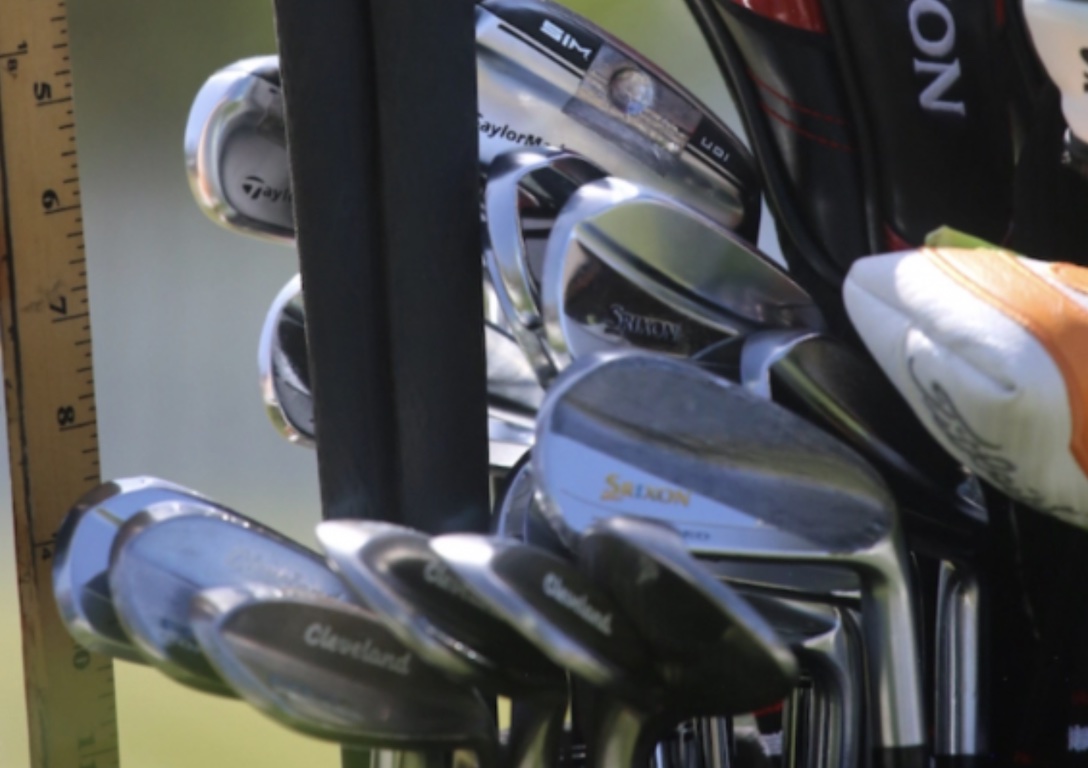
At the 2021 Masters, Hideki Matsuyama broke through to claim his first major championship, winning the first major for Japan in the process. Matsuyama’s led by four strokes entering the final day. Ultimately, a final-round 73 and 10-under tally was one better than Will Zalatoris could manage and Matsuyama donned the green jacket.
Take a look at the clubs Matsuyama had in play three years ago below.
Driver: Srixon ZX5 (9.5 degrees, flat)
Shaft: Graphite Design Tour AD DI 8 TX
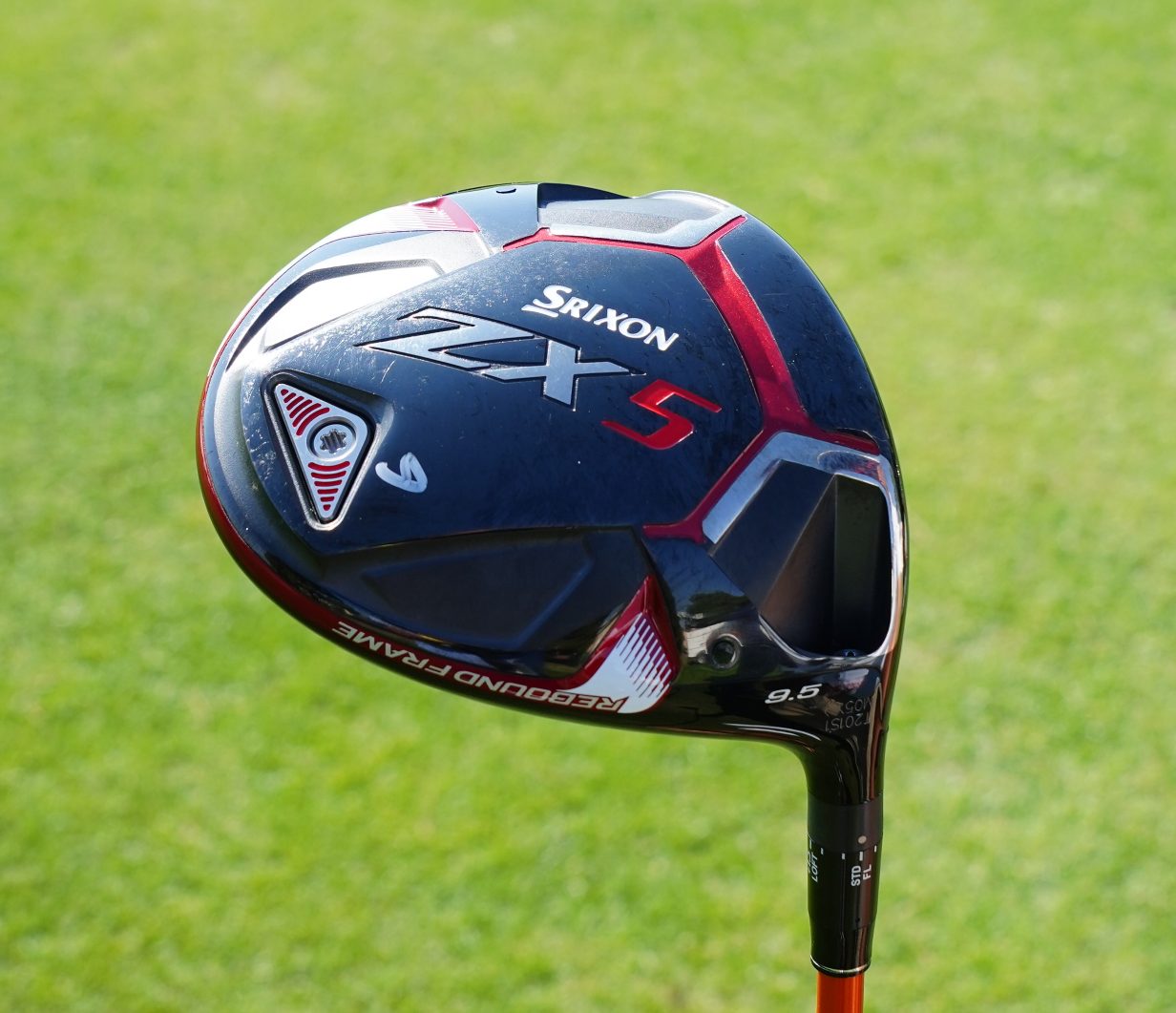
Photo credit: Yoshihiro Iwamoto
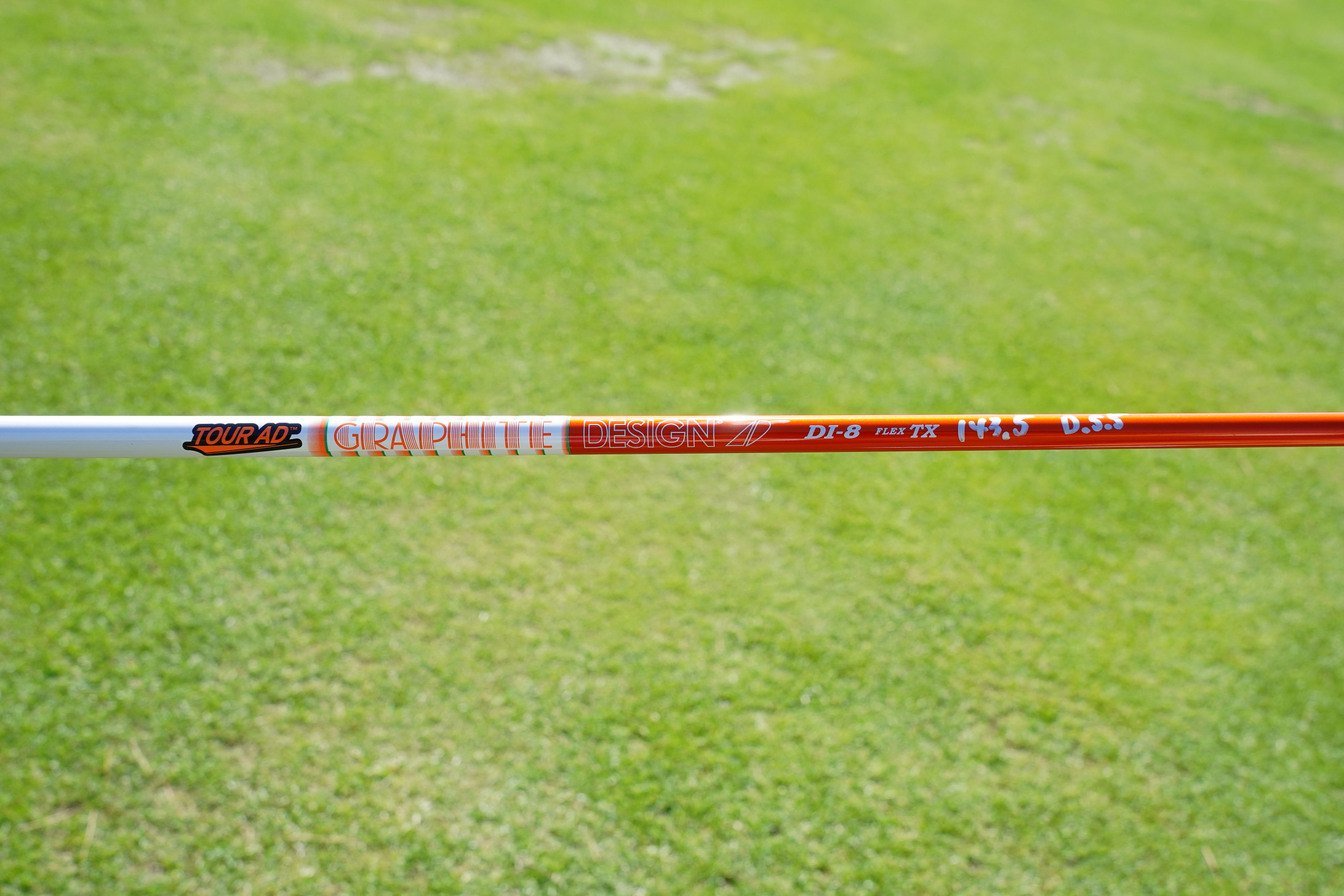
3-wood: TaylorMade SIM2 Titanium (15 degrees)
Shaft: Graphite Design Tour AD DI 9 TX
Utility: TaylorMade SIM UDI (3)
Shaft: True Temper Elevate Tour X100
Irons: Srixon Z-Forged (4-PW)
Shafts: True Temper Dynamic Gold Tour Issue S400
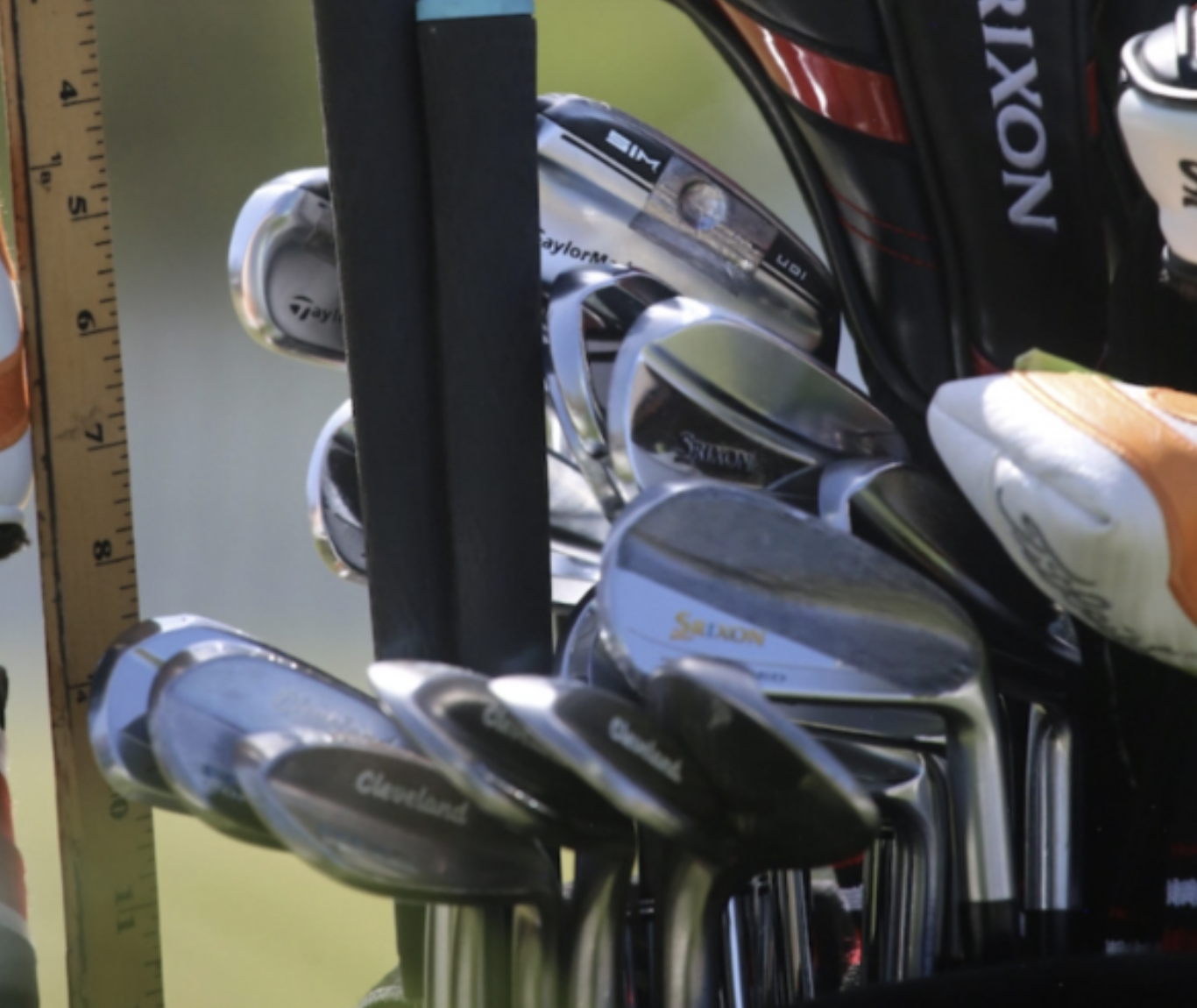

Wedges: Cleveland RTX 4 Forged Prototype (52-10, 56-8 @57.5, 60-08 @62)
Shafts: True Temper Dynamic Gold Tour Issue X100 (S400 in 52)
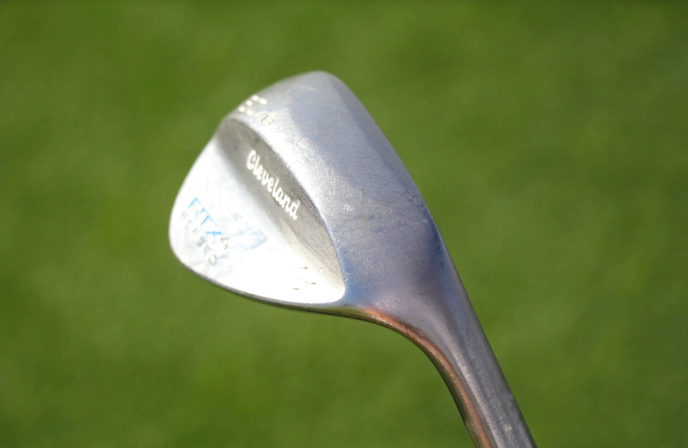
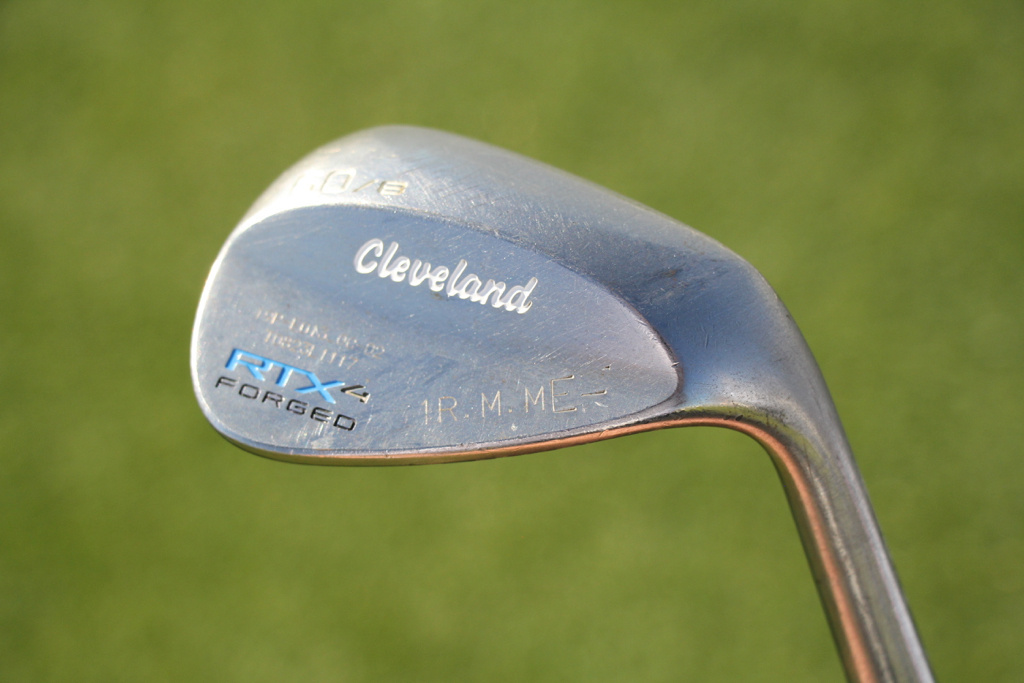
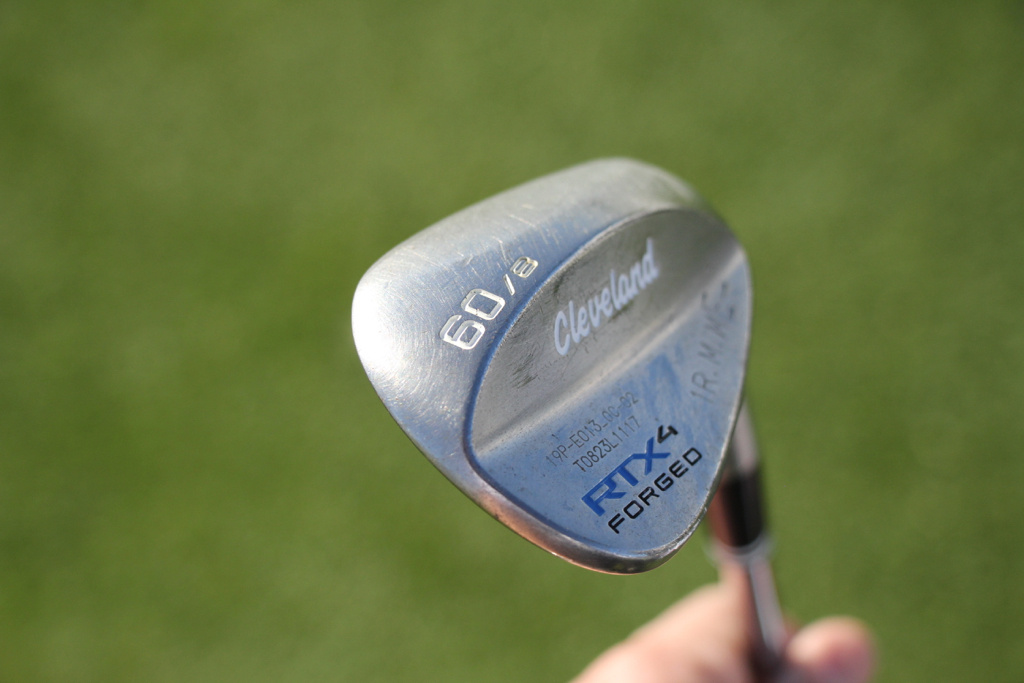
Putter: Scotty Cameron Newport 2 GSS
Grip: Lamkin Deep-Etched Full Cord
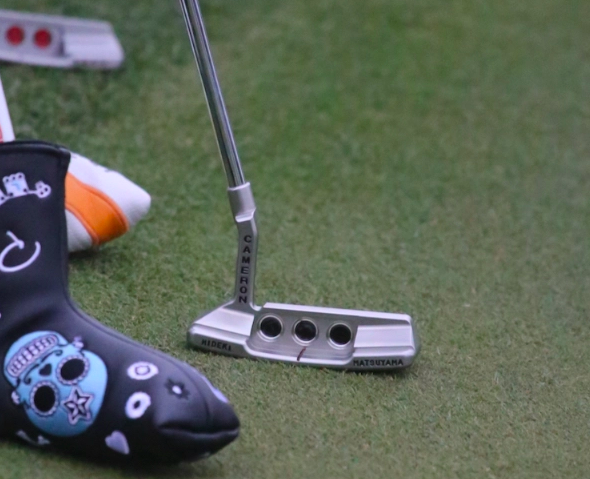
Ball: Srixon Z-Star XV
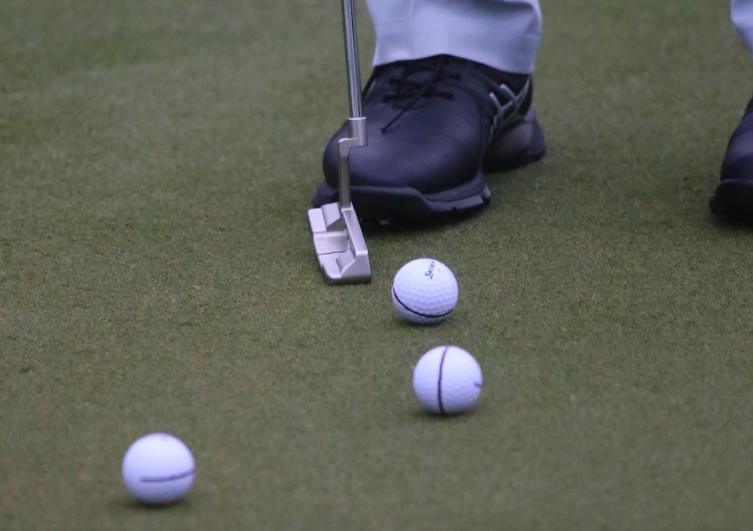
Grips: Iomic X
- LIKE2
- LEGIT1
- WOW1
- LOL0
- IDHT0
- FLOP0
- OB0
- SHANK0
Equipment
Best irons in golf of 2024: The shotmakers
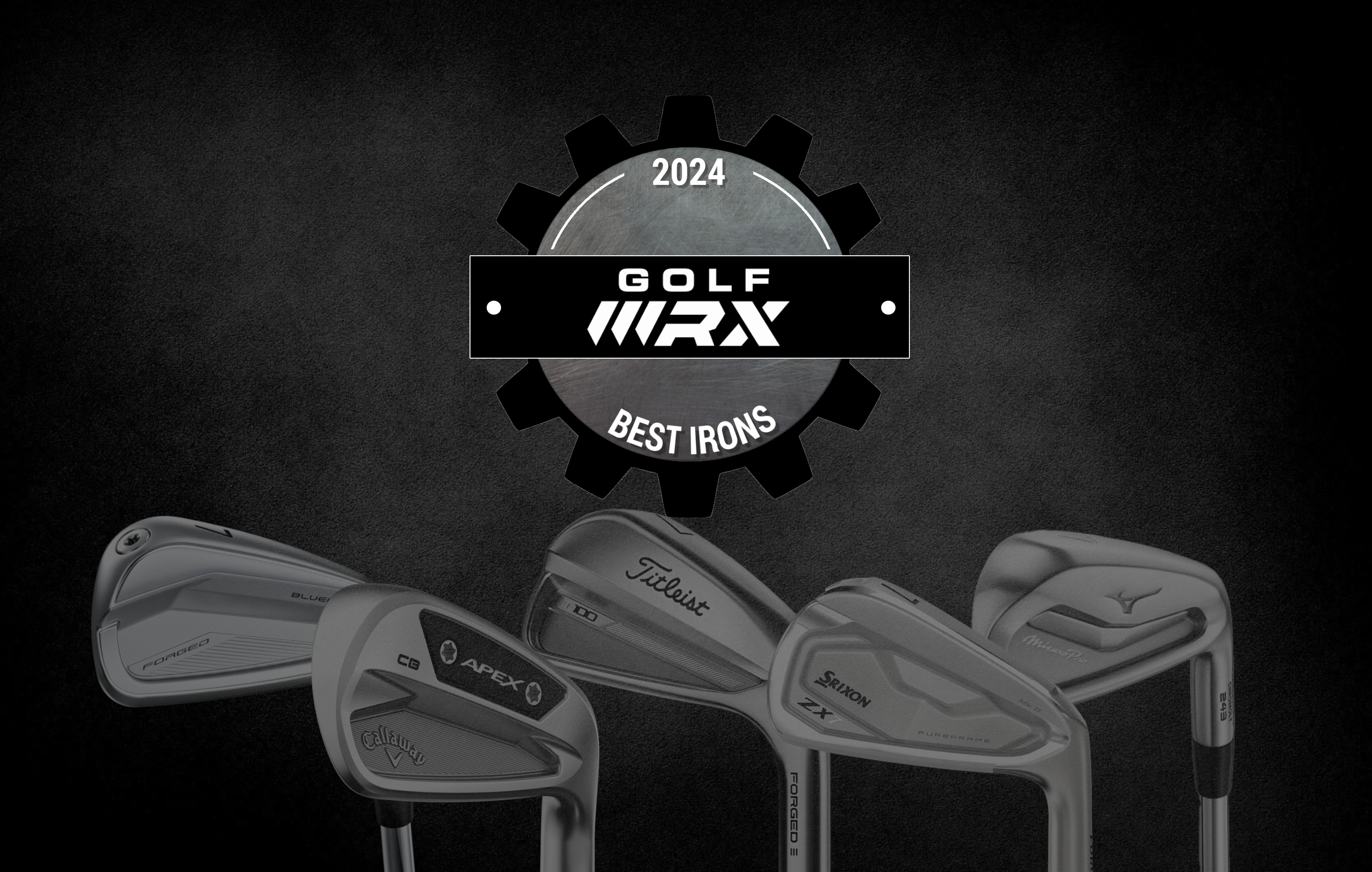
In our effort to assemble the 2024 best irons, we have again compiled an expert panel of fitters to help you find out which of the 2024 irons is best for your game.
Ultimately the best way to find your personal best iron set is to work with a professional fitter using a launch monitor. The difficult part is a lot of people don’t have easy access to fitters, launch monitors, and club builders — so at GolfWRX, we have done a lot of the work for you.
We are in the era of not just maximizing distance but also minimizing the penalty of common misses for each player — this applies to irons just as much as it does with any other club in the bag. And of course, proper set makeup and gapping is essential. This is why, now more than ever, custom fitting is essential to help you see results on every swing you make.
We want to give you the tools and information to go out and find what works best for you by offering recommendations for your individual iron set wants and needs with insight and feedback from the people who work every single day to help golfers get peak performance out of their equipment.
Best irons of 2024: The process
The best fitters in the world see all the options available in the marketplace, analyze their performance traits, and pull from that internal database of knowledge and experience like a supercomputer when they are working with a golfer.
It’s essentially a huge decision tree derived from experience and boiled down to a starting point of options—and it has nothing to do with a handicap!
Modern iron sets are designed into player categories that overlap the outdated “what’s your handicap?” model, and at GolfWRX we believe it was important to go beyond handicap and ask specific questions about the most crucial performance elements fitters are looking at.
These are the best iron categories we have developed to help you determine which category is most important for your swing and game.
Best irons of 2024: The categories
- Overall performance
- Easiest to launch/Slower swing speed
- Pure enjoyment
- Shotmakers
- Most technology-packed
- Best blade
2024 Best irons: The shotmakers

Each one of these irons was designed with a single purpose: to provide the ultimate shotmaking weapon. You don’t have to be a tour player to appreciate the pleasure of hitting a well-struck shot with a club engineered to offer superior feedback. This category is all about control — and that doesn’t mean it “has to be a blade.”
Titleist T100

Their story: The “players iron” of the new T-Series family, the T100 iron features an all-new Tour-designed sole, which was inspired by discussions with both the tour staff and the Vokey wedge design team. It features a new variable bounce sole design, which provides less bounce in the heel and more bounce in the toe to facilitate better turf interaction and improved feel.
Fitter comments:
- “More tech than blades but just as workable. It’s why it gets play on tour. Not a lot of offset and fairly traditional lofts as these want to create some spin for maintaining a steep enough landing.”
- “Number one played iron on tour. It definitely gets the love it deserves for sure…especially from a turf interaction standpoint. It definitely gets to the turf nice and quick compared to some of the previous generations.”
- “Incredible feel and feedback while offering a good amount of forgiveness in this category. Can play it from any lie and hit any shot…one of the most played irons on tour for a reason.”
- “It has good feel. It’s really forgiving for that compact-looking head. It’s got a great sole on it that works really well. It’s got weaker loft, and so therefore it’s going to spin more. It’s really good for the guy with a lot of speed, because it’s not going to jump and go all over the place.”
- “It’s always been one to throw in the mix for that player who comes in looking for a players iron but not quite a blade. They’ve just slowly kind of kept working on that, that product that’s been in their cycle for a while. I don’t want to say it’s kind of gold standard-like, but that’s definitely one that’s going to be in the mix.”
For more photos/info, read our launch piece.
Srixon ZX7 Mk II
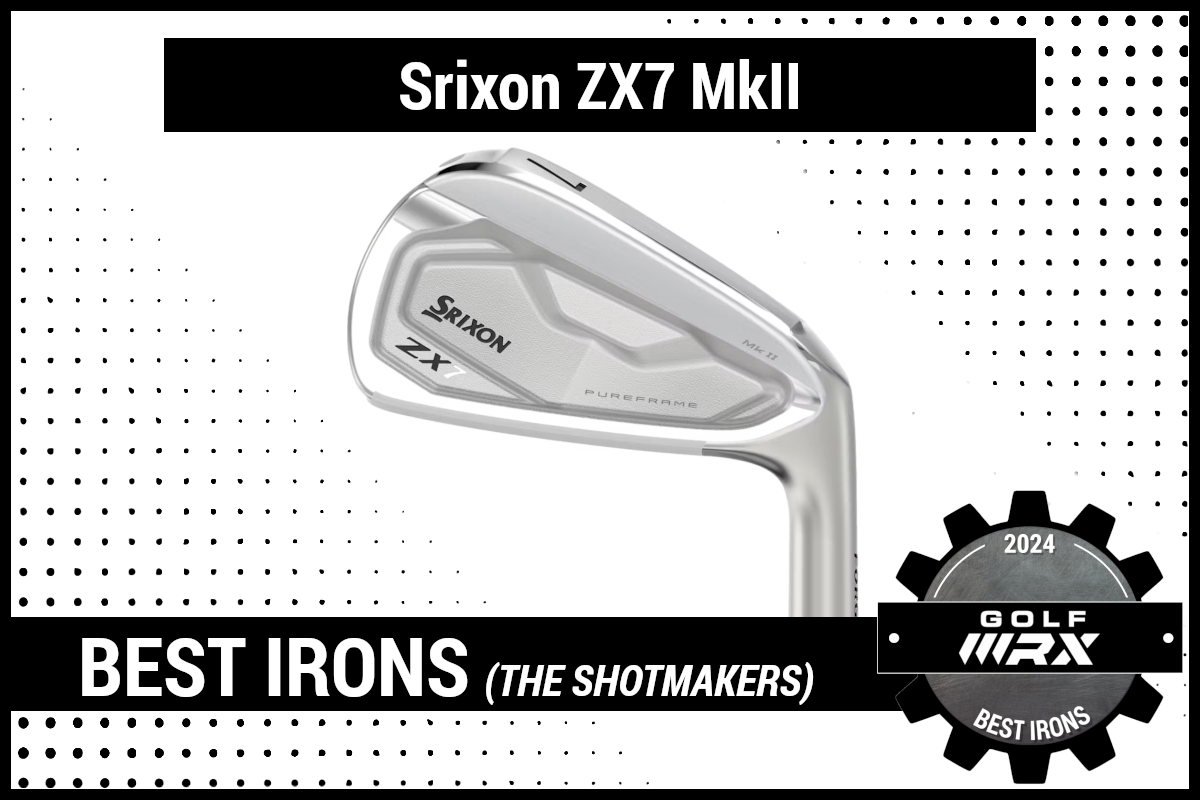
Their story: The players iron ZX7 Mk II features PureFrame: an 80-percent thicker portion of 1020 carbon steel forged behind the sweet spot in the body of the iron for soft-yet-solid-feeling impact. Also significant to the design: A refined Tour V.T. Sole Proprietary sole widths, bounce angles, and notches in the heel and toe of the club aid clean contact from a variety of lies.
Fitter comments:
- “What I love about that is for that guy that hits it, like square on the face of the golf club. It’s, this is the way I kind of explain to customers and they hit it like, it’s not gonna be the longest. It’s probably not gonna be the straightest, but you will hit seven iron in the exact same distance every time you hit it. And, and I think that’s the appeals to that better player because like very rarely do.”
- “I’m a personal fan of it. No hot face. No jumpers, does a great job of controlling the spec which we like a lot…quite forgiving. That’s a, that’s a, that’s a major player in that category.”
- “I mean, two of the five fitters out here play them. I mean, they’re awesome, like they’re still, you know, a small compact players iron, but you still get a lot of help and forgiveness out of them, which I like. You see a lot of these on tour that are non, you know, non-contract guys playing them.”
- “They did a really good job of not screwing up a good thing. ZX7 was fantastic. It seemed like 50 percent of the non-contract guys in pro golf played that iron. It continues to give very consistent numbers. The better player wants a consistent number. They need to know it’s going to go that distance. This club does that very well.”
- “Srixon has been the “sleeper” iron company for a number of years now, but I think the secret is out. The ZX7 Mk II fit many different player types, from tour pro to mid-handicapper. The forging is very soft and forgiving, and the iron is very workable for the player with more ability. They didn’t change the shape from ZX7 to Mk II, and I think that’s a great thing.”
For more photos/info, read our launch piece.
Callaway Apex CB
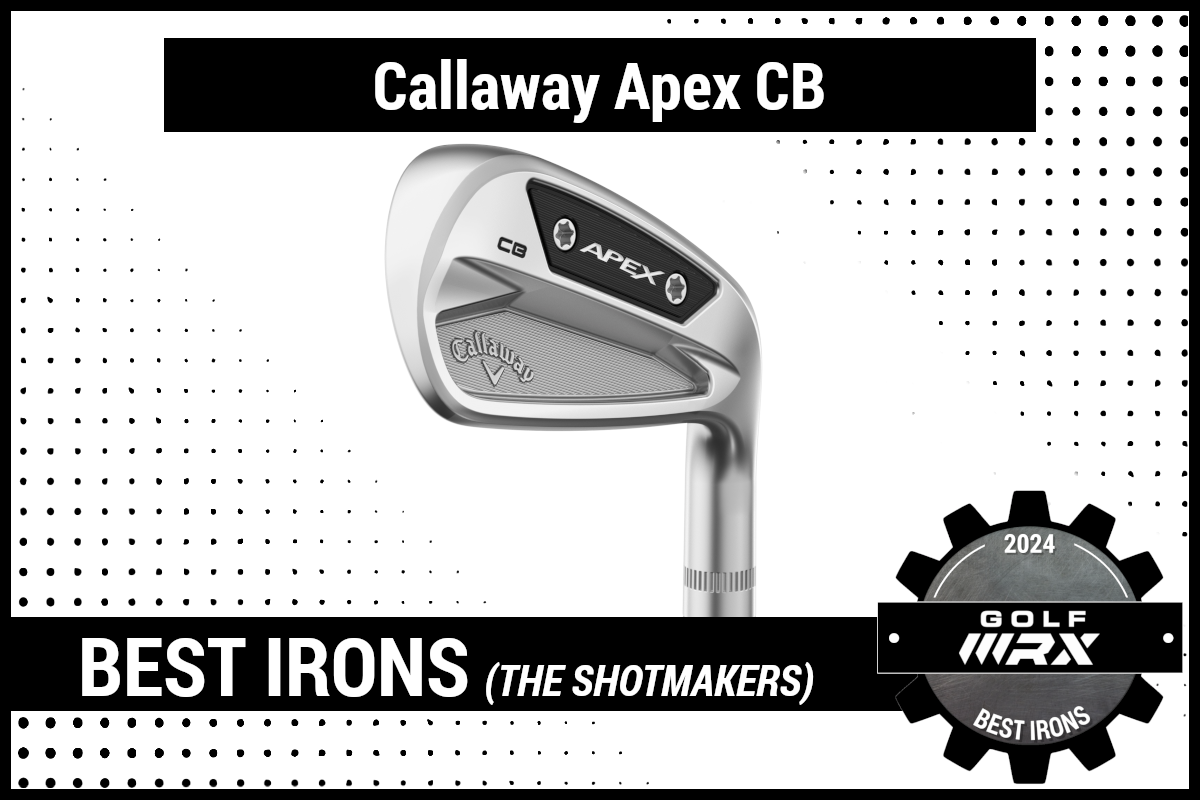
Their story: Callaway touts an all-new forged construction in its 2024 Apex CB irons and its associated feel and workability. Forged from 1025 carbon steel in a five-step process, Apex CB ‘24 irons also feature MIM weighting in the toe and similar progressive CG and Dynamic Sole Design to the Apex MB irons.
Fitter comments:
- “Excellent offering. Clean and easy to aim. Always a great iron.”
- “Yeah, from my understanding, TCB, like that was kind of its replacement. and TCB was not easy to hit, in my opinion. I find that the guys are hitting it. It’s actually, it’s pretty forgiving for what it is. Guys that are looking for more of that just kind of solid piece, they don’t want to get any of that hollow stuff.”
- “I really like it. I think it’s a great club. It’s a little, a little above my pay grade in terms of skill, but a really good feeling club. It seems like it’s a good iron all around for that player who, you know, is looking for that CB or that better-player type club.”
- “I think for that guy who wants something that feels good, that CB just feels fantastic and for how dinky and tiny that thing is, I think it’s not unforgiving. And it just kind of checks all the boxes from a look, sound and feel standpoint. It’s definitely a really good, really good iron for sure.”
For more photos/info, read our launch piece.
Mizuno Pro 243

Their story: 4- through 7-irons are Grain Glow Forged HD from a single billet of 4120 Chromoly steel, while 8-GW are forged from 1024 Elite Mild Carbon steel. 4 through 7 irons feature a Flow Microslot for faster ball speeds and increased launch (thanks to more rebound area. The soles of the 243 irons are equipped with a Wrap Around Sole Grind for better turf interaction as well as increased bounce angle. The Soft Copper Underlay is again present as is the Full Satin Brush finish.
Fitter comments:
- “Amazing forgiveness and workability in this category. The turf interaction is awesome for those who draw and fade the ball.”
- “Best looking of the shot-making irons.”
- “Minor refinements from the last one. And for the category of iron, it’s pretty forgiving. They cleaned up the cosmetics a little bit. I mean, it’s a really, really, really good iron for sure.”
- “Mizuno, the, the 243, you know, that’s another great one. Forged one-piece golf club that’s super solid — no jumpers, Very similar to the ZX 7 but looks better.”
- “That one continues to be kind of like a unicorn in this category because I like the ball speed…Like almost to the guy, we get more ball speed with that thing.”
For more photos/info, read our launch piece.
Ping Blueprint S
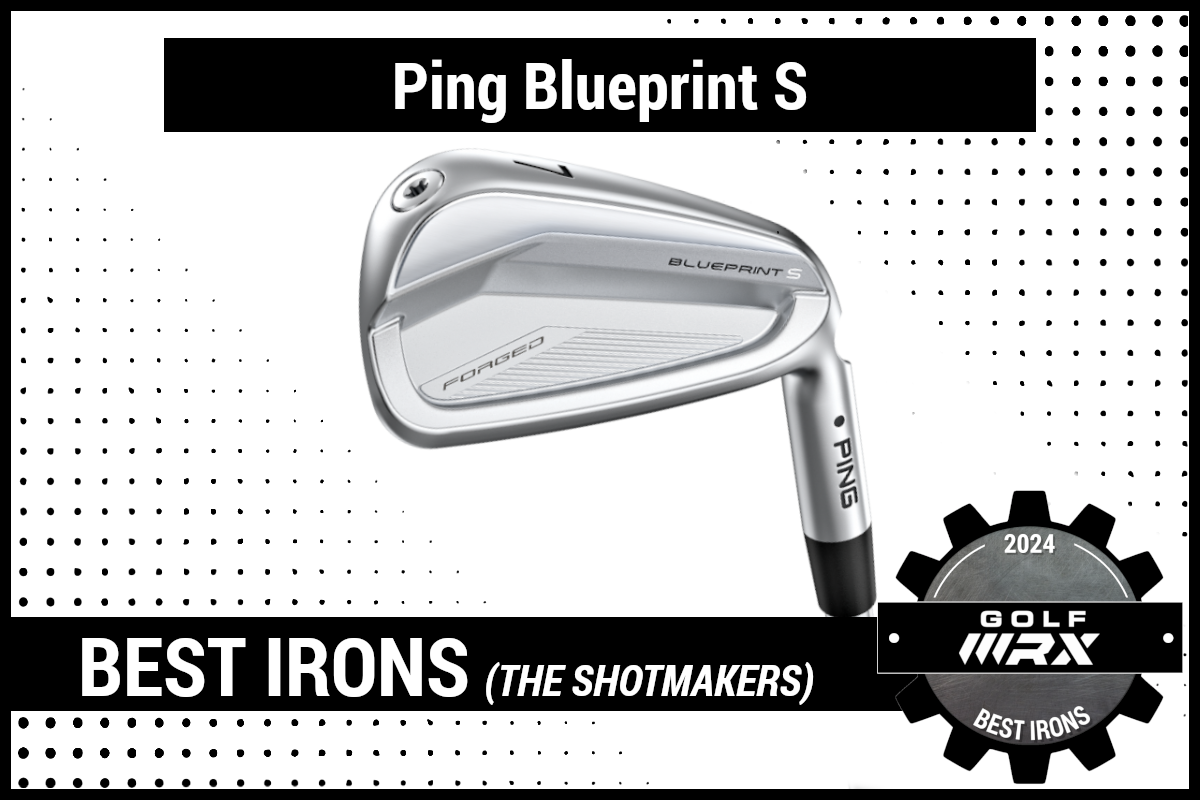
Their story: Developed after extensive testing with top Ping professionals, the Blueprint S features a forged cavity-back design, influenced by Ping’s existing “S” series irons. The compact shape, thin top line, and minimal offset make it visually appealing to forged club/blade enthusiasts. The forged 8620 carbon steel head has a clean cavity design with a textured pattern and hydropearl 2.0 chrome finish. Precision-milled grooves and a high-density toe screw enable swingweight fine-tuning.
Fitter comments:
- “These things are pretty looking. The reduced offset and thinner topline makes this look like a blade, but you get the help and forgiveness. These are fast through the turf and are super easy to work.”
- “The performance of the iron, it’s great. It’s a rare forged iron from Ping. It looks good. It’s very forgiving. It’s probably the best-performing iron in its category. We’ve been getting a lot of people asking about it. We’ve seen some guys pair it with a blueprint T, a little bit. It looks really good. It’s their best looking one by far.”
- “I’m a big fan of that iron. I was little surprised by it. I thought it was going to be kind of intimidating from all the tour use and then getting it out on the course. It’s actually a pretty playable iron. It’s been the winner in that category for us.”
- “What you’ve got is a forged golf club that’s designed by Ping where, you know, they’re always going to the performance first and look and feel second and now you’ve got something that’s got the look and feel that a lot of good players want to feel and great performance.”
- “I think it’s something that they needed to fill that niche for that forged kind of guy that’s more compact without going into like the old blueprint or the Blueprint T…super tiny blade.”
For more photos/info, read our launch piece.
Best irons of 2024: Meet the fitters
- Adam Rathe: Club Champion
- Adam Scotto: Club Champion
- Adam Seitz: Club Champion
- Aidan Mena: Club Champion
- Alex Dice: Carl’s Golfland
- Alex Praeger: Club Champion
- Ben Giunta: The Tour Van
- Blake Smith, PGA: True Spec
- Bo Gorman: True Spec
- Brad Coffield: Carl’s Golfland
- Brett Ott: Club Champion
- Brian Riley: Club Champion
- Cameron Scudder: Club Champion
- Carmen Corvino: True Spec
- Christian Sandler: Club Champion
- Clare Cornelius: Cool Clubs
- Dan Palmisano: Club Champion
- Dane Byers: Club Champion
- Darren Joubert: Club Champion
- Dennis Huggins: Club Champion
- Drew Koch: Club Champion
- Eric Touchet: Touchet Performance Golf
- Erik Gonzales: Club Champion
- Evan Morrison: Club Champion
- Gus Alzate: True Spec
- Jake Medlen: Stripe Show Club Fitters
- Jake Woolston: Club Champion
- Jake Wynd: Club Champion
- Jay Marino: Club Champion
- Jeremy Olsen: Club Champion
- Jim Yenser: Club Champion
- Joe Stefan: Club Champion
- Joey Simon, PGA: Club Champion
- Jonathan Kaye: Club Champion
- Jordan Patrick: True Spec
- Jordan Rollins: Club Champion
- Kevin Arabejo: Club Champion
- Kevin Downey: Club Champion
- Kirk Oguri: Pete’s Golf
- Kyle Lane: Club Champion
- Kyle Murao: Club Champion
- Marc Roybal: True Spec
- Mark Hymerling: Club Champion
- Mark Knapp: Carl’s Golfland
- Matt Miller: Club Champion
- Matt Rish: Club Champion
- Matthew Gandolfi: Club Champion
- Mike Martysiewicz: Club Champion
- Mike Weis: Club Champion
- Mitch Schneider: Club Champion
- Nicholas Barone: Club Champion
- Nick Sherburne: Club Champion
- Nick Waterworth: Haggin Oaks
- Preston Vanderfinch: Club Champion
- Rick Lane: Club Champion
- Rob Anderson, PGA: Club Champion
- Russell Hubby: Club Champion
- Ryan Fisher: Grips Golf
- Ryan Grimes: Club Champion
- Ryan Johnson: Carl’s Golfland Bloomfield Hills
- Sam Kim: True Spec
- Scott Sikorski: Club Champion
- Scott Felix: Felix Club Works
- Scott Trent: Club Champion
- Sean Pfeil: Club Champion
- Shaun Fagan: True Spec
- Steve Harrow: Club Champion
- Tad Artrip: Club Champion
- Thomas Mattaini: Pull the Pin
- Tony Rhode: True Clubs
- William Buse: Club Champion
- William Cho: NovoGolf
- William Fields: Club Champion
RELATED: Best driver 2024
- LIKE8
- LEGIT2
- WOW0
- LOL0
- IDHT0
- FLOP0
- OB0
- SHANK1
Whats in the Bag
WITB Time Machine: Patrick Reed’s winning WITB, 2018 Masters
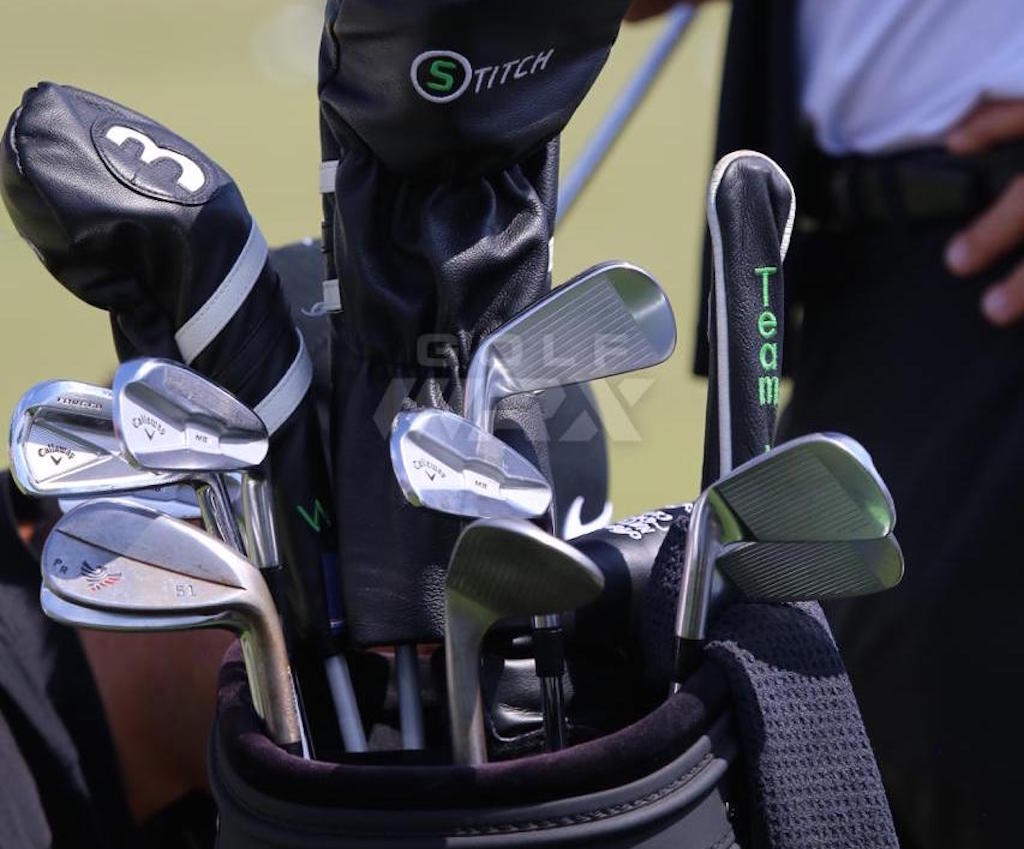
At the 2018 Masters, Patrick Reed bested Rickie Fowler by a stroke at Augusta National to win his first major championship.
See the clubs Reed used to fire his final-round 71 below.
Driver: Ping G400 LST (10 degrees)
Shaft: Aldila Rogue Silver 110 M.S.I. 70 TX
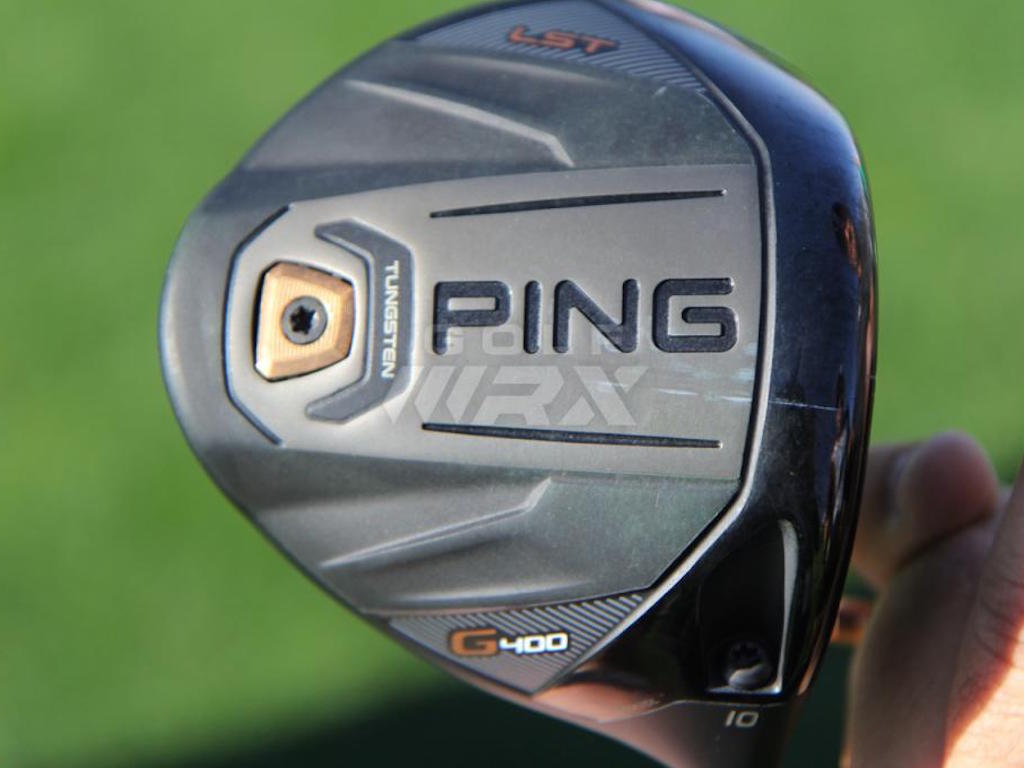
3-wood: Nike VR Pro Limited Edition (15 degrees)
Shaft: Aldila Rogue Silver 110 M.S.I. 80 TX
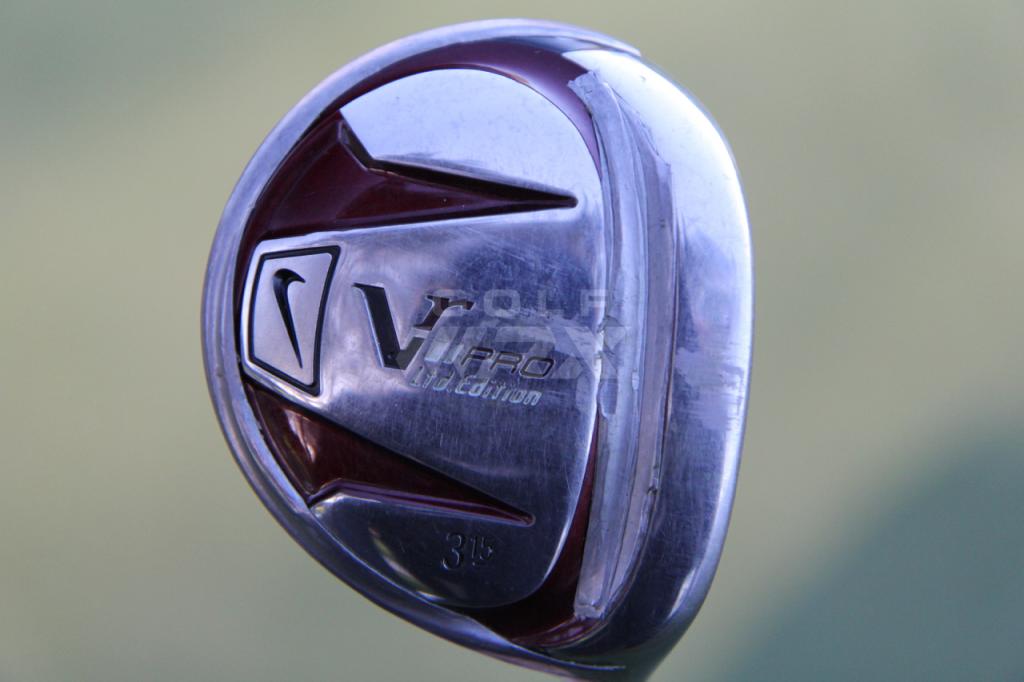
Driving iron: Titleist 716 T-MB
Shaft: True Temper Dynamic Gold Tour Issue 120 X100
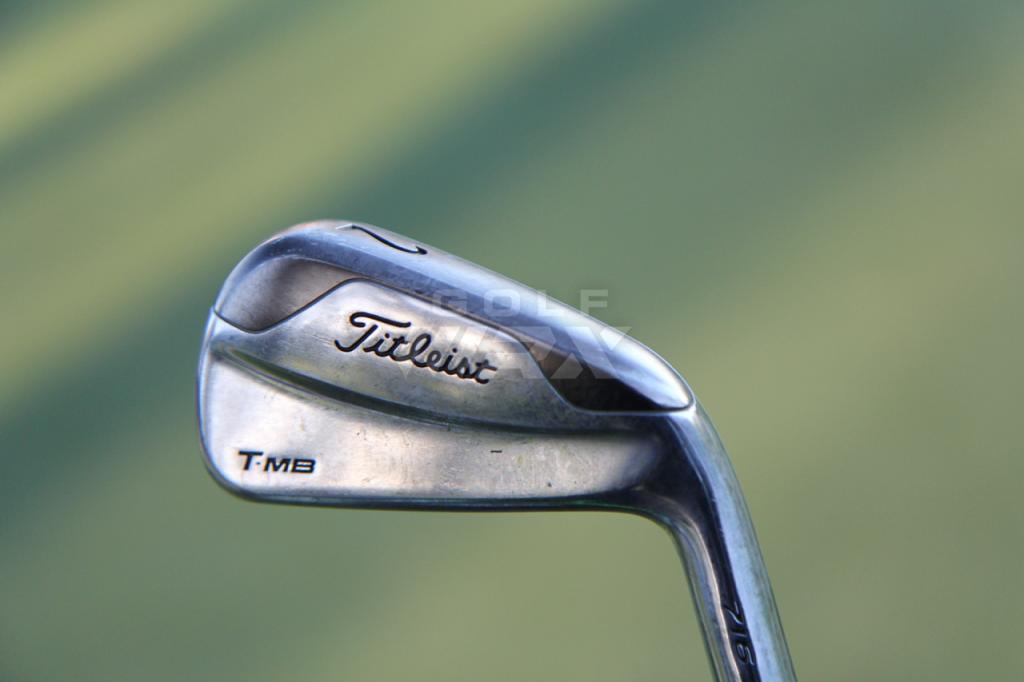
Irons: Callaway X Forged 2013 (4), Callaway MB-1 (5-PW)
Shaft: True Temper Dynamic Gold Tour Issue X100
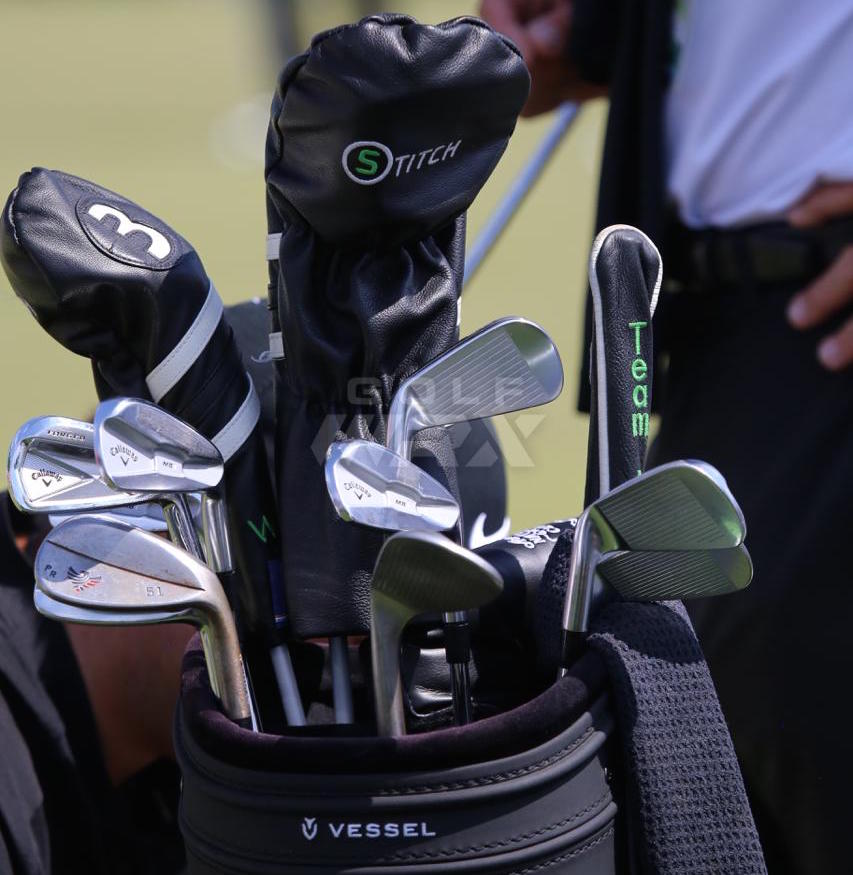
Wedges: Artisan Prototype (51 and 56 degrees), Titleist Vokey Design SM5 (61 degrees)
Shaft: True Temper Dynamic Gold Tour Issue S400
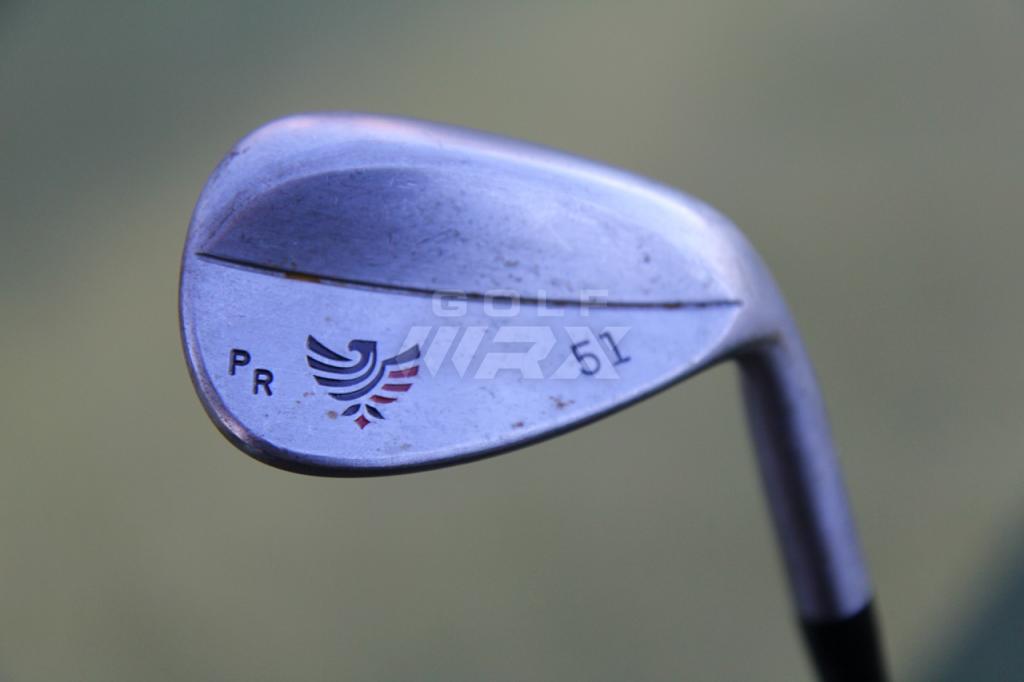
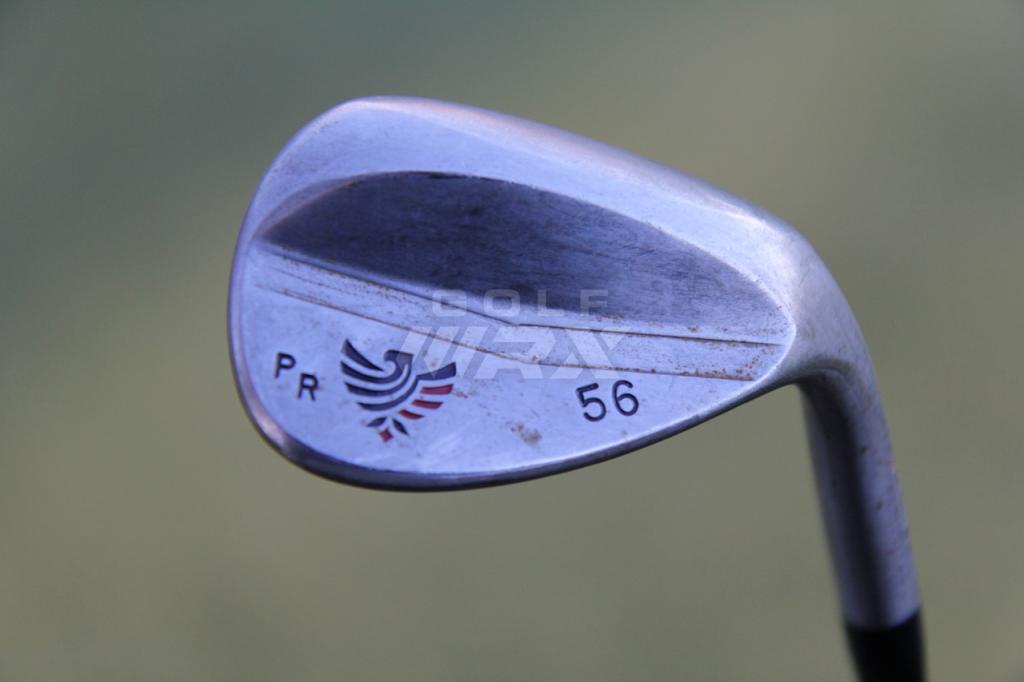
Putter: Odyssey White Hot Pro 3
Grip: Iomic Standard Red Pistol
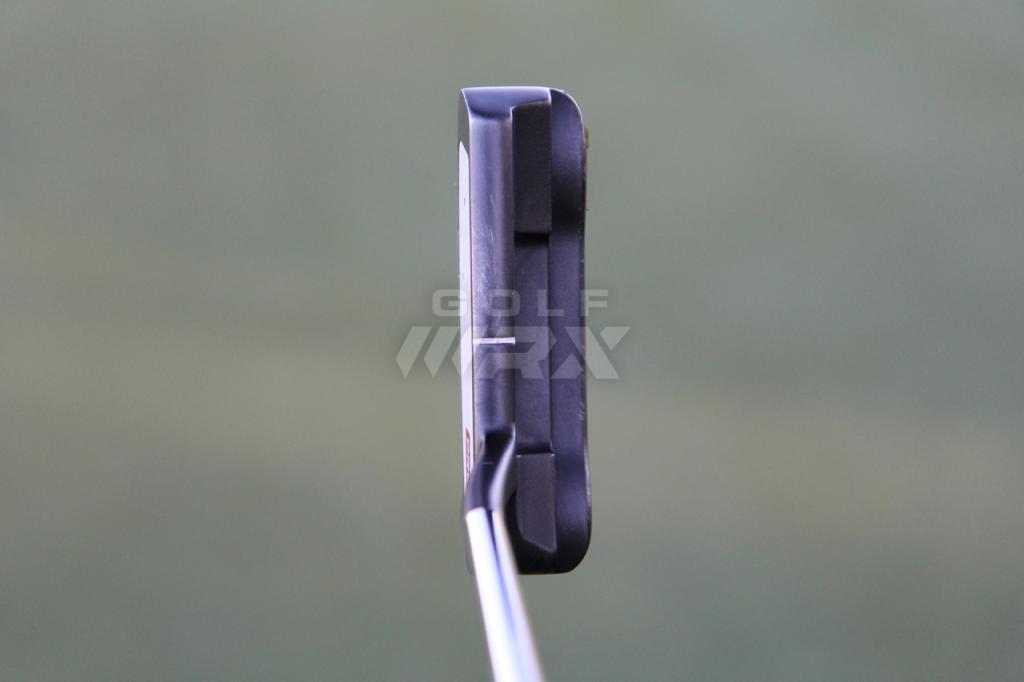
Ball: Titleist Pro V1
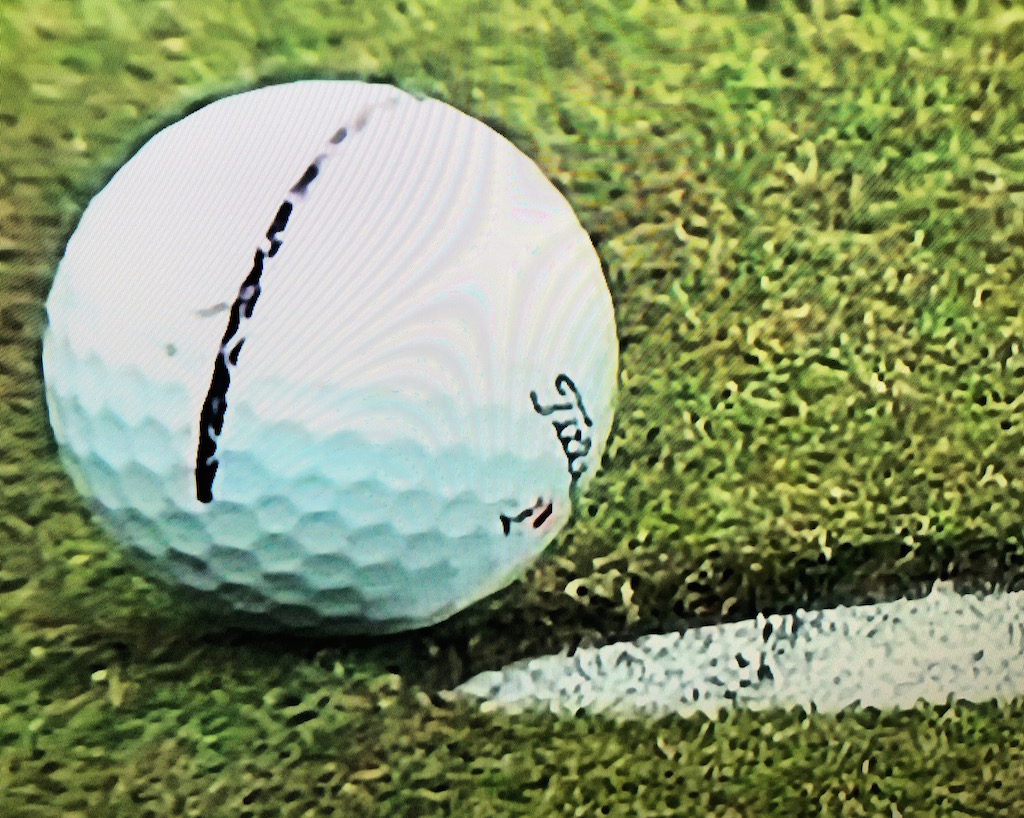
Grips: Golf Pride MCC (All black, installed logo down, with two wraps of double-sided tape)
- LIKE0
- LEGIT0
- WOW0
- LOL0
- IDHT0
- FLOP0
- OB0
- SHANK0
-

 19th Hole2 weeks ago
19th Hole2 weeks agoJohn Daly stuns fans into silence with brutal opening tee shot on PGA Tour Champions
-

 19th Hole1 week ago
19th Hole1 week agoThings got heated at the Houston Open between Tony Finau and Alejandro Tosti. Here’s why
-

 19th Hole6 days ago
19th Hole6 days agoReport: Tiger Woods has ‘eliminated sex’ in preparation for the 2024 Masters
-

 19th Hole1 day ago
19th Hole1 day agoTiger Woods arrives at 2024 Masters equipped with a putter that may surprise you
-

 19th Hole3 weeks ago
19th Hole3 weeks ago2-time major champ announces shock retirement from the sport at age of 33
-

 19th Hole2 weeks ago
19th Hole2 weeks agoCharlie Woods finds it tough going on American Junior Golf Association debut
-

 19th Hole1 week ago
19th Hole1 week agoAddiction, spinal fusion, and scam artists – Everything Anthony Kim revealed in candid interview with David Feherty
-

 19th Hole5 days ago
19th Hole5 days agoAnthony Kim says doctors told him that he ‘may not have much time left’ ahead of LIV return


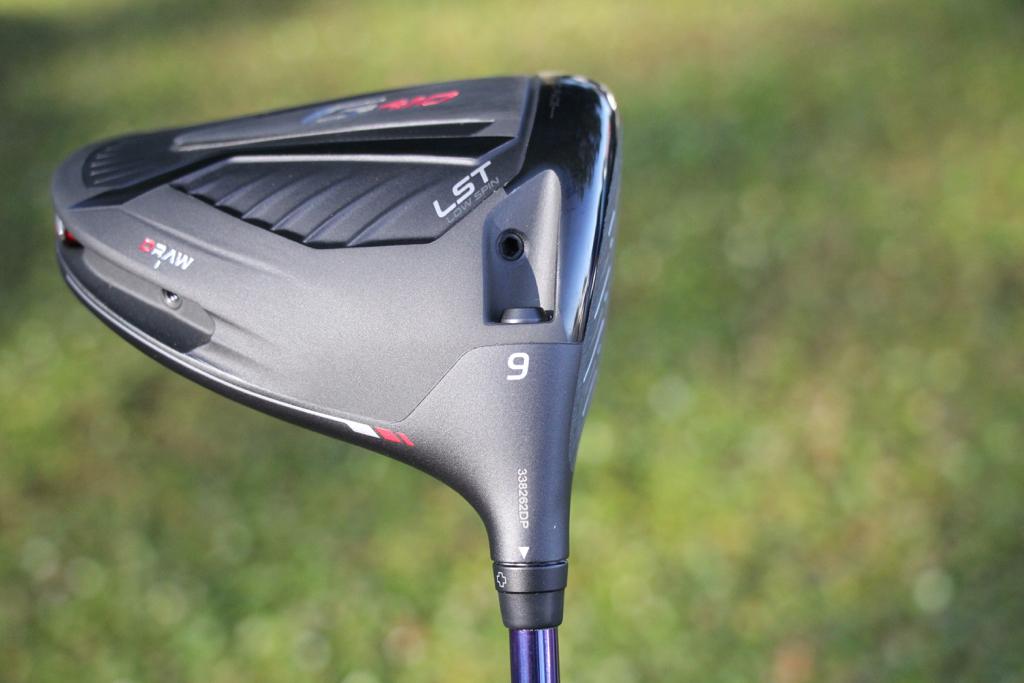
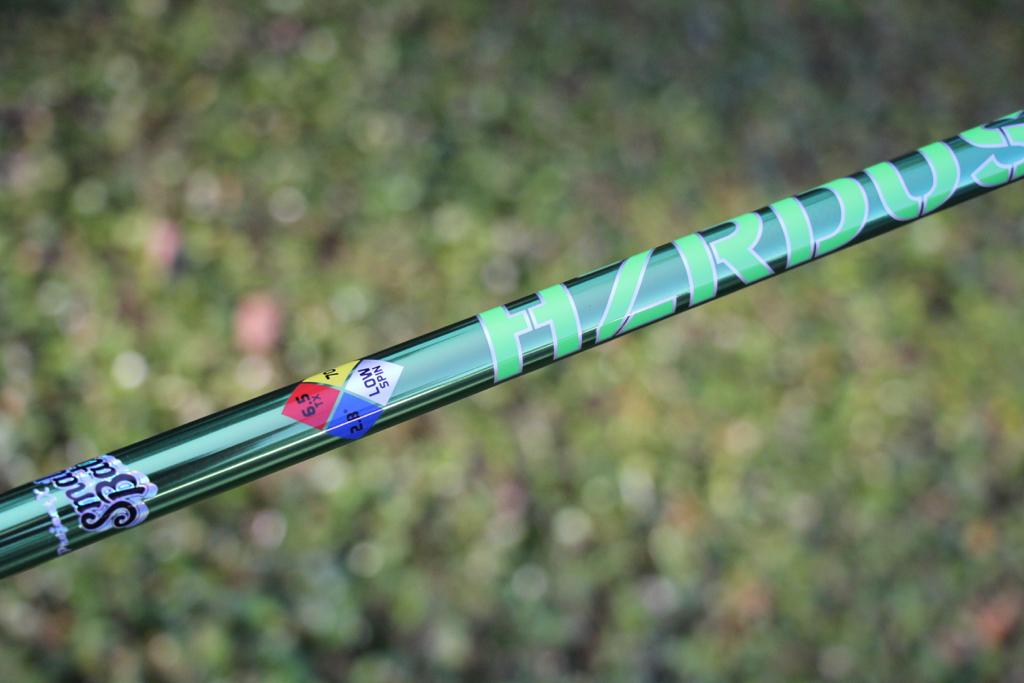
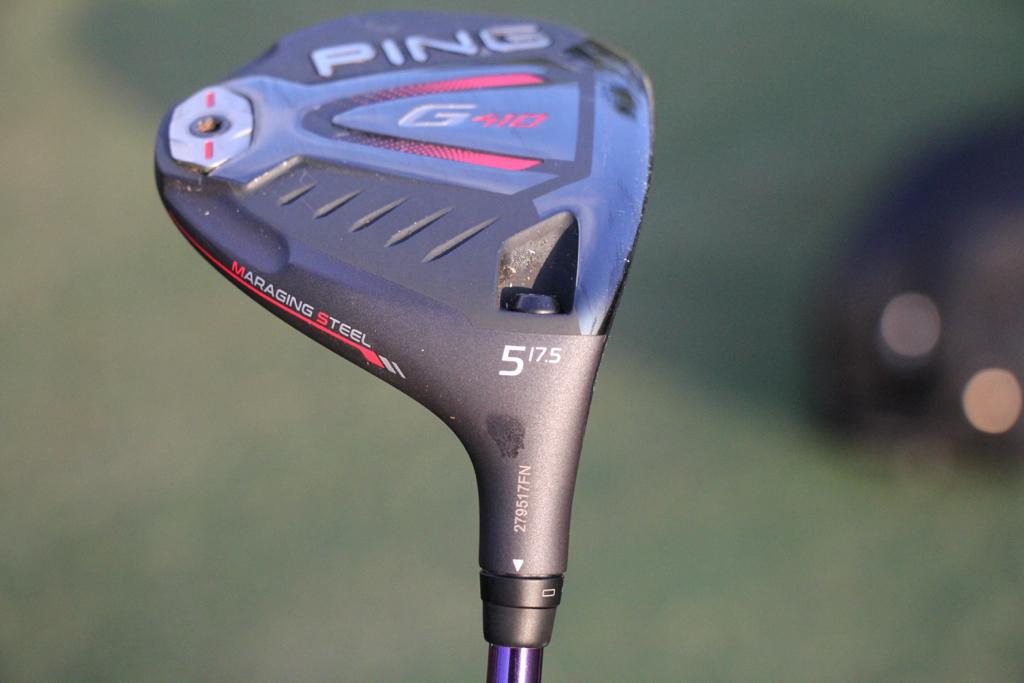
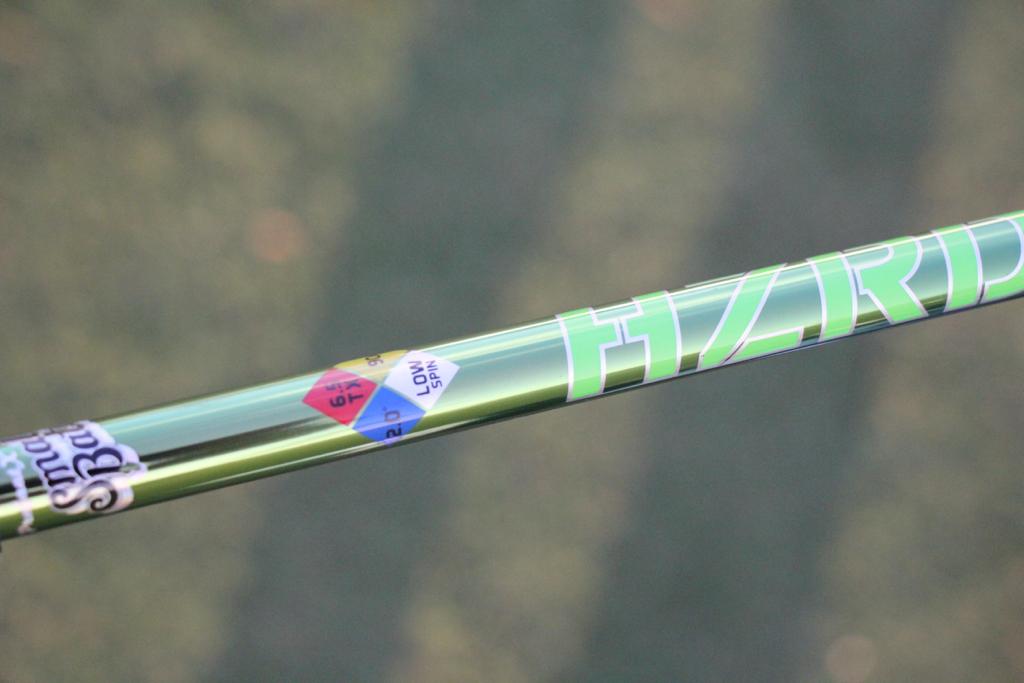
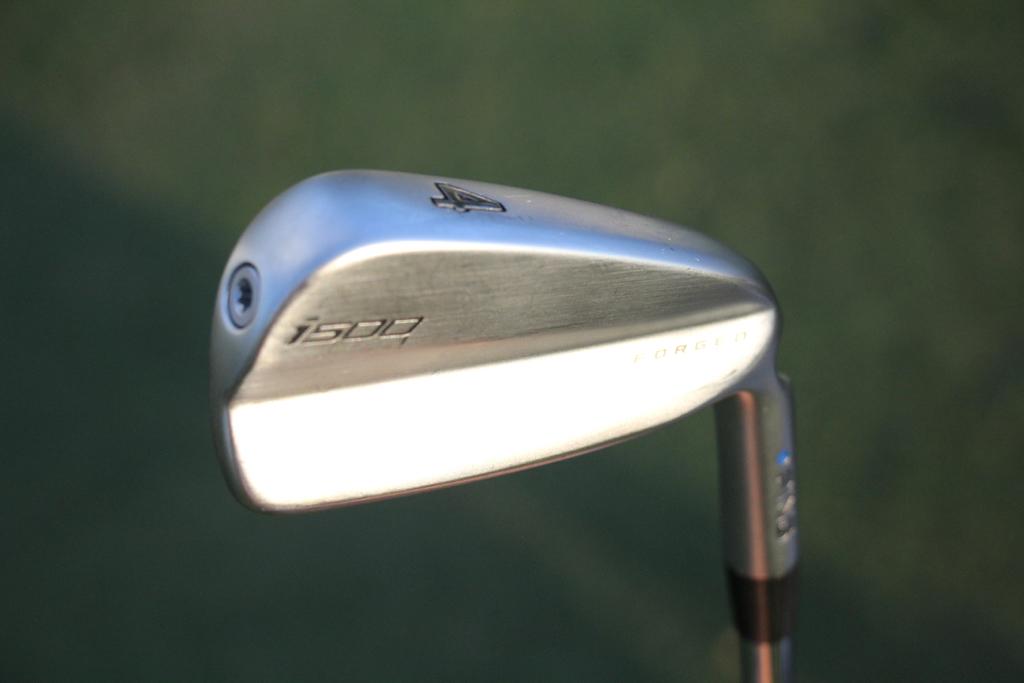
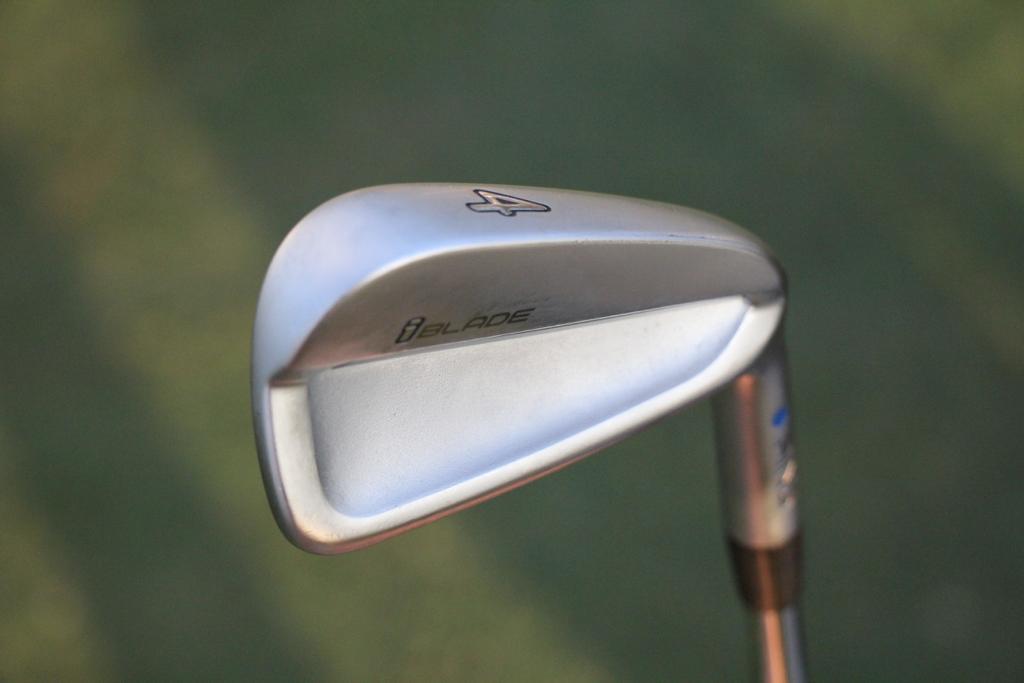
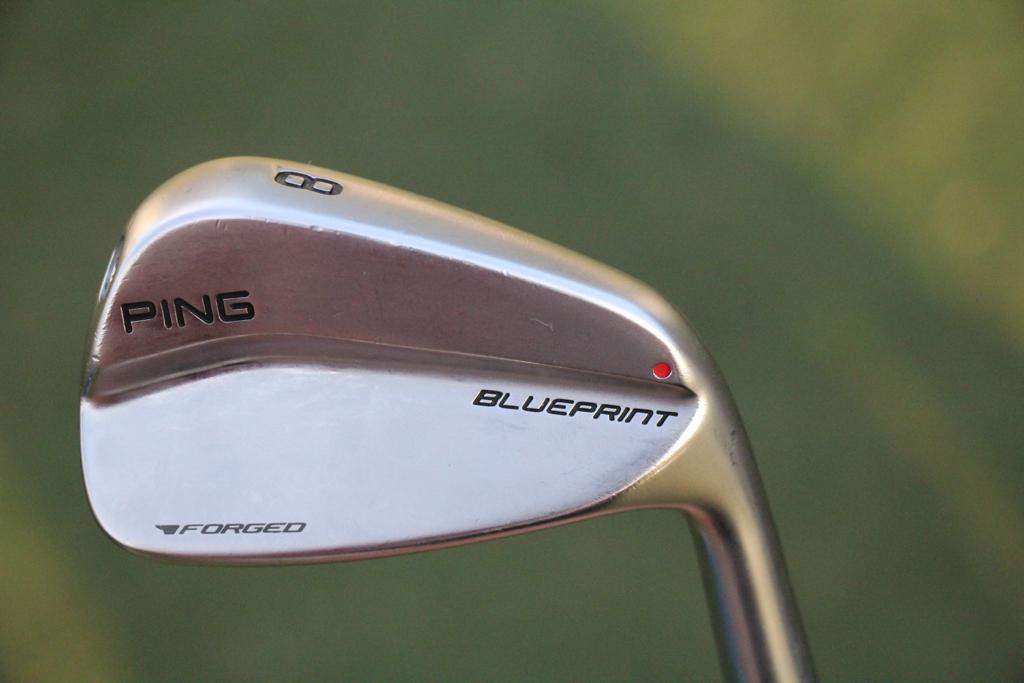
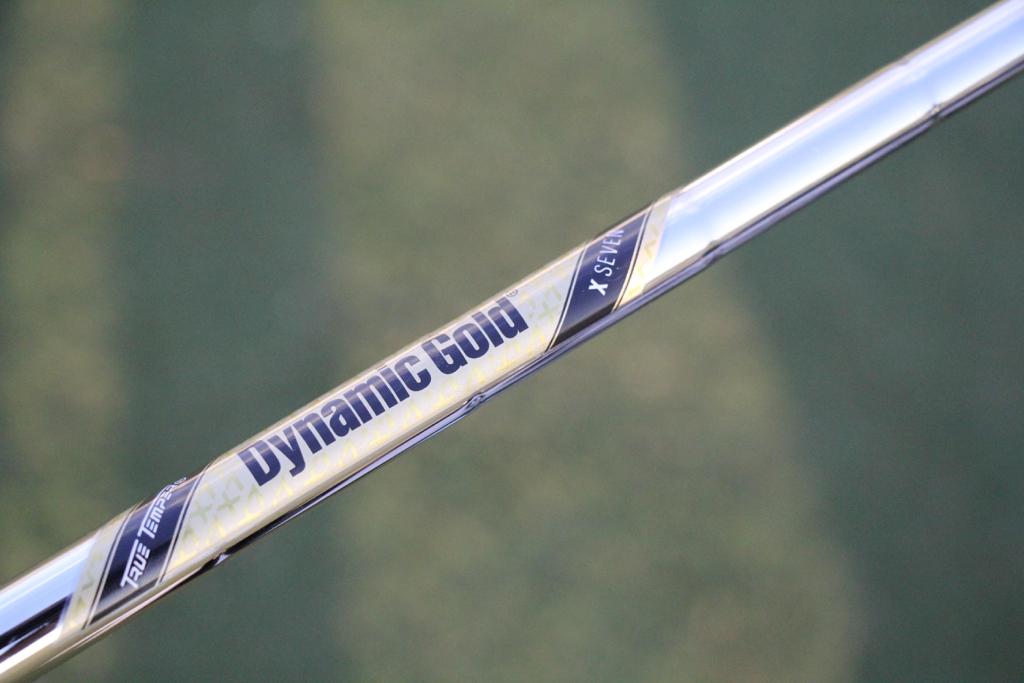
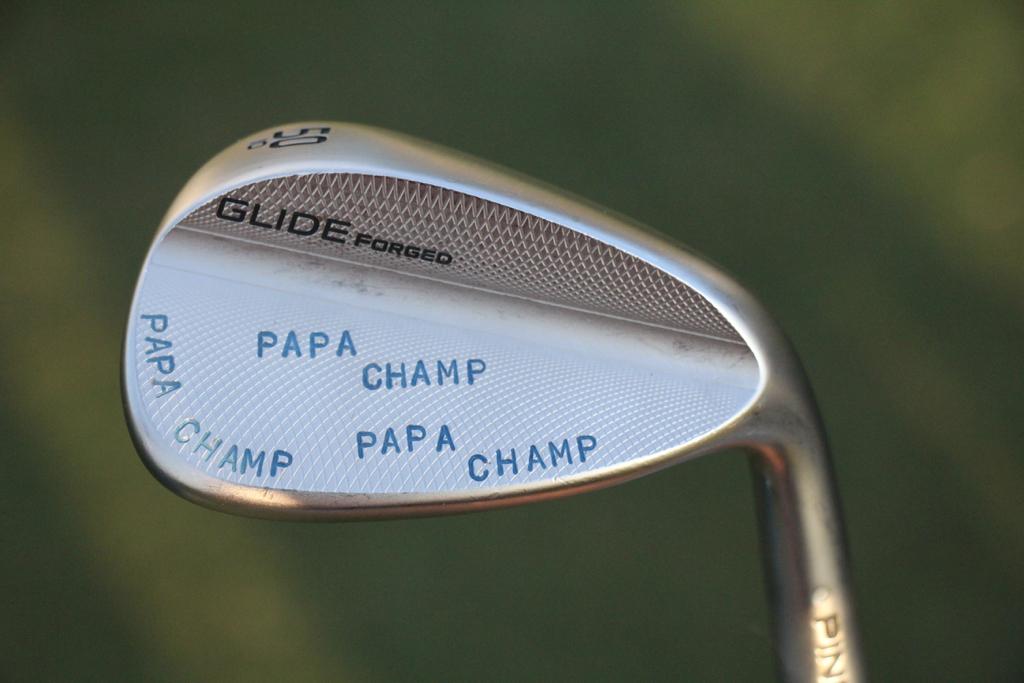
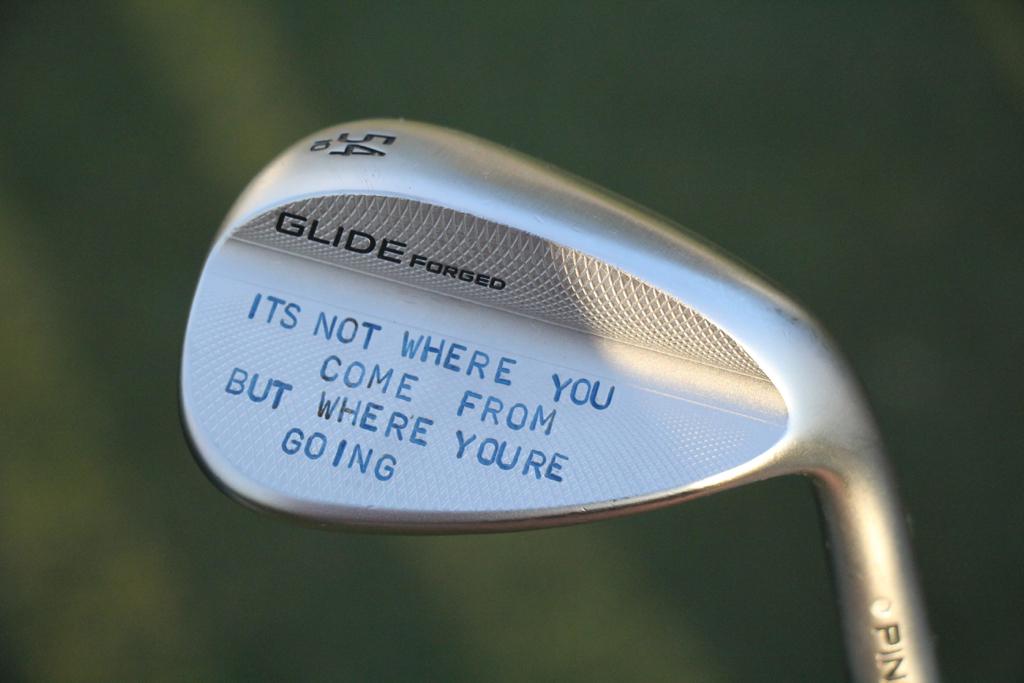
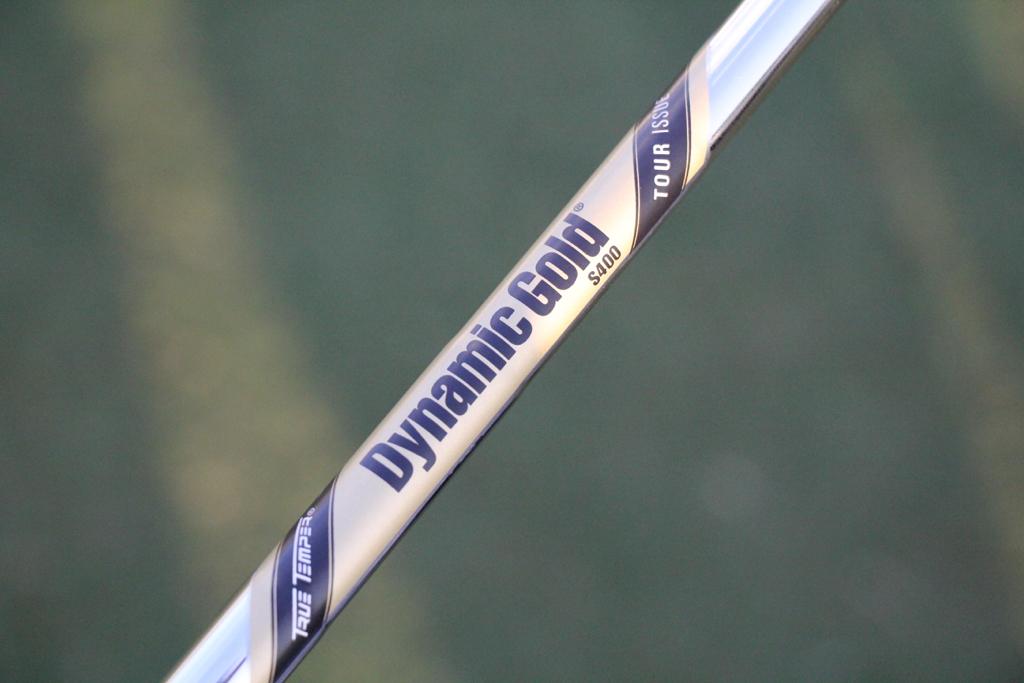






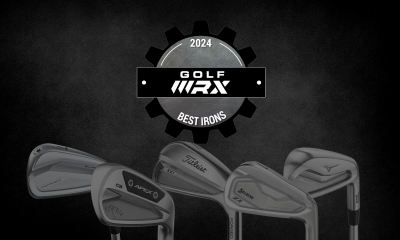



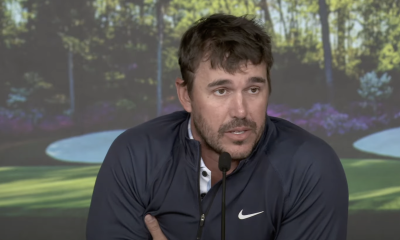











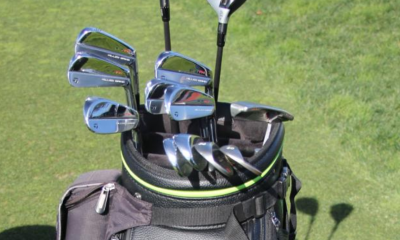

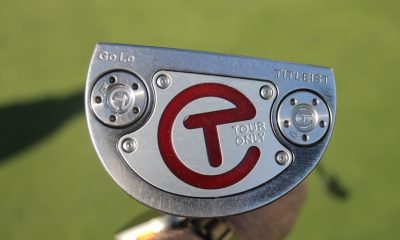

will
Jun 26, 2020 at 11:59 pm
ahhh man, wanted to see the putter
stanley
Jun 26, 2020 at 7:00 pm
this is an awesome detail of cameron’s champ. what a fascinating player.
The Truth
Jun 26, 2020 at 6:41 pm
Srixon XV is LONG!
Jordan
Jun 26, 2020 at 2:12 pm
This is 10x more impressive than the Bryson stuff. His ‘slingshot’ swing is incredible.
Sam Bozoian
Jun 26, 2020 at 12:12 pm
Not great timing JW. I guess clubs are clubs though